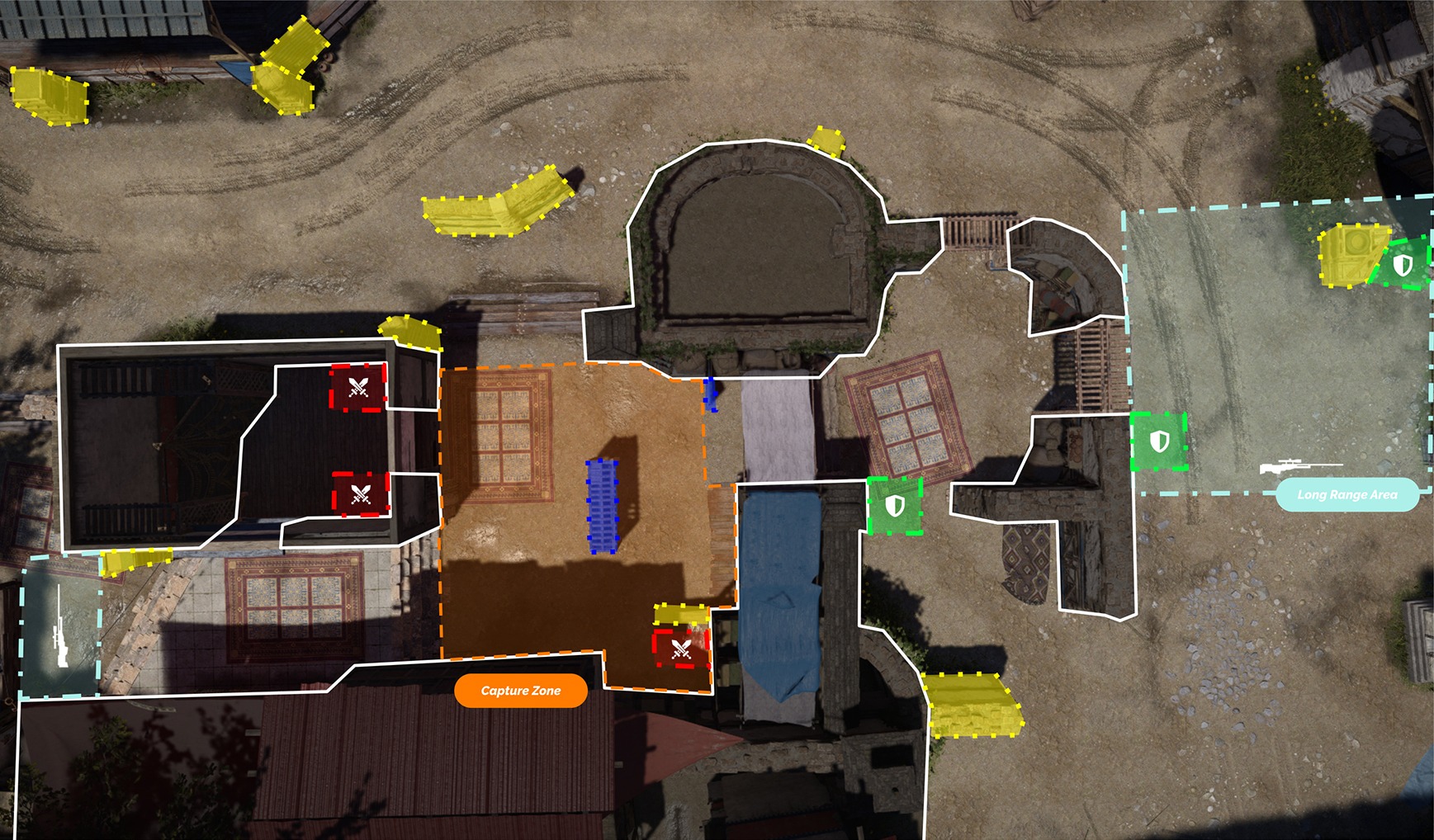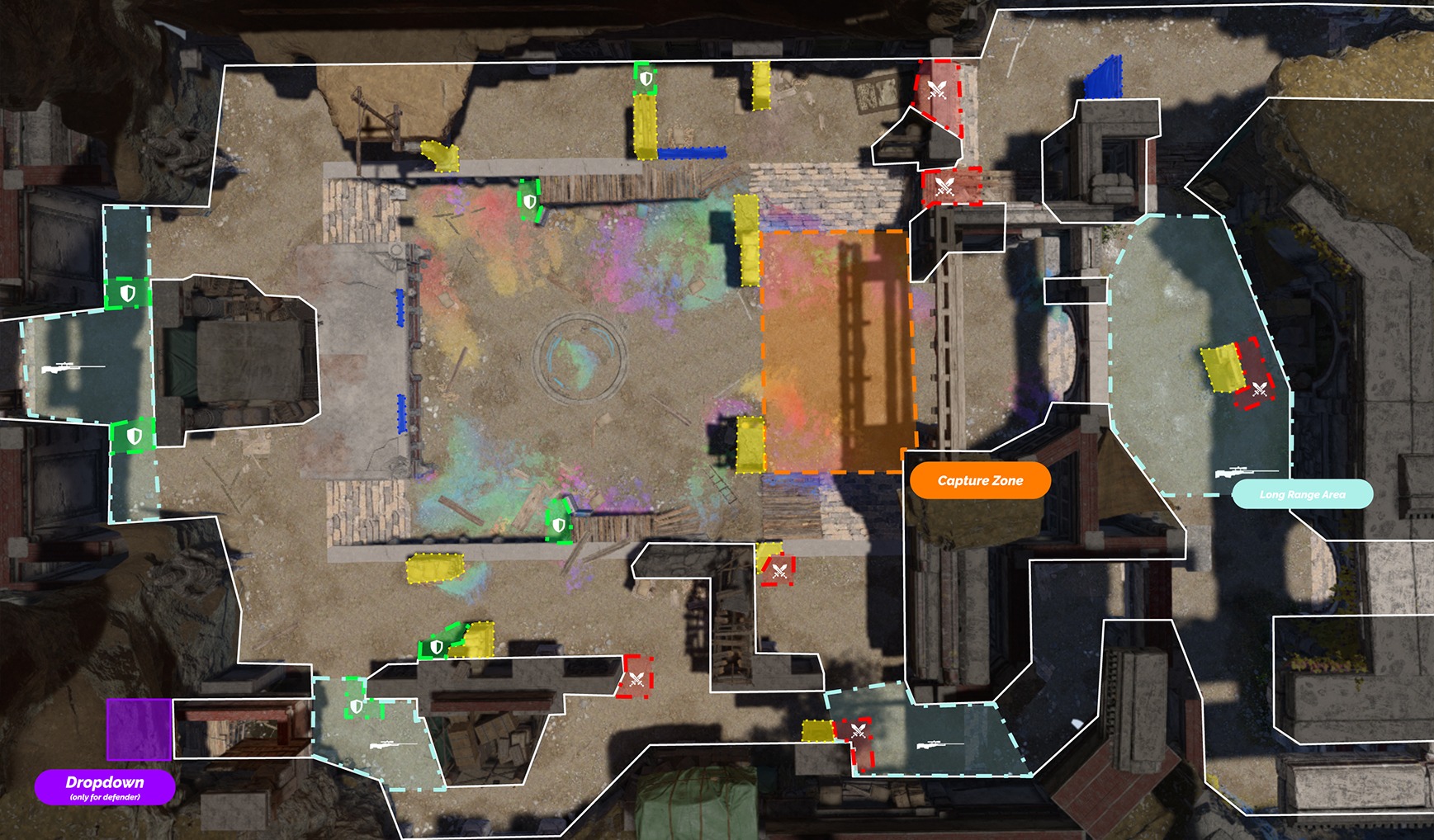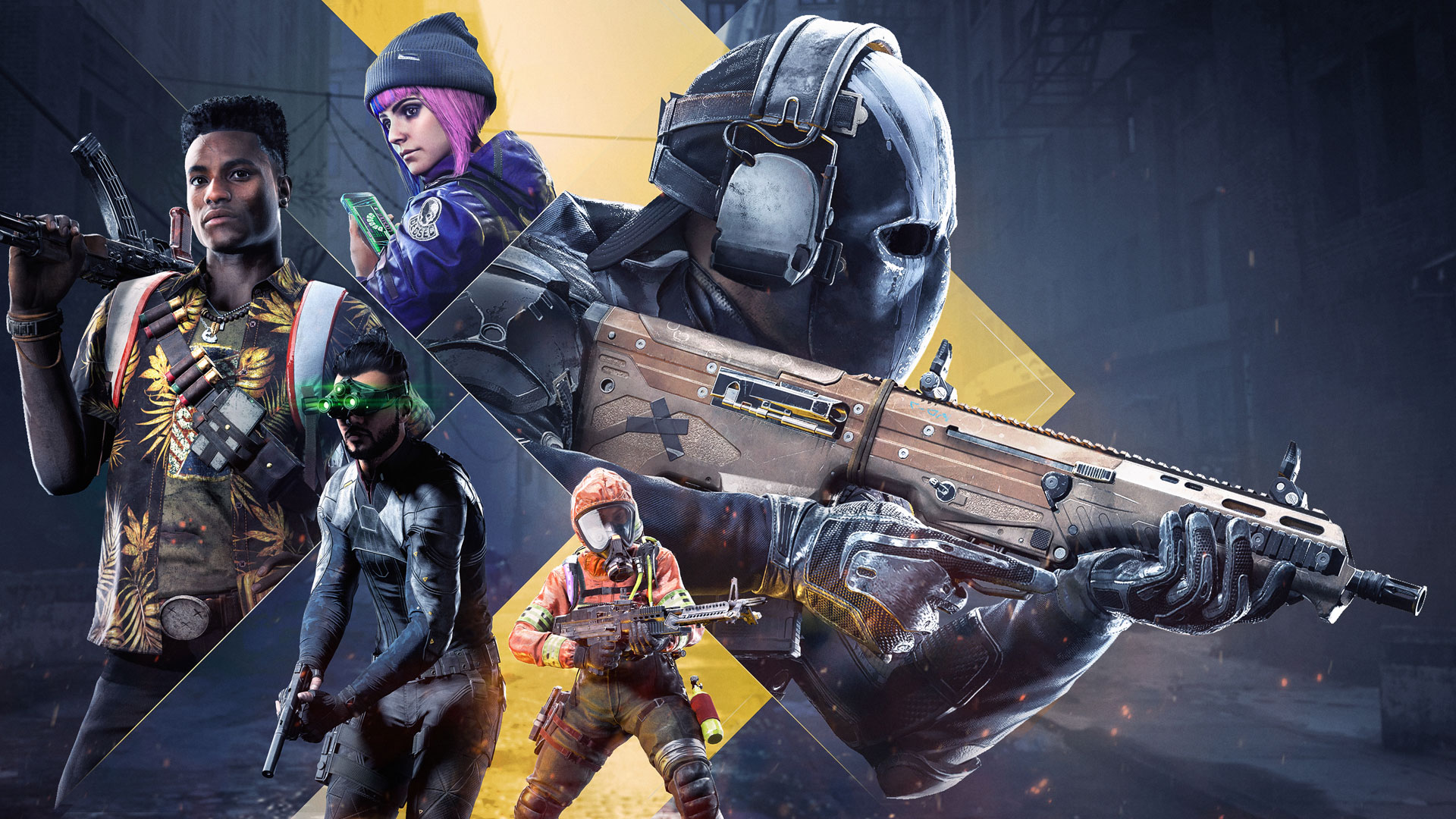
WHAT'S - XDefiant ?
XDefiant was released in 2024 and it’s a free-to-play first-person shooter competitive game. XDefiant features a variety of factions and classes, each with their own unique abilities and weapons.
It is set in the Ubisoft universe, map locations are based on multiple Ubisoft titles’ in-game locations. Players engage in fast-paced, team-based multiplayer matches across a variety of maps and game modes.
Himalaya - Linear Map :
My mission as Level Designer on the XDefiant project was to design a 300meters-long Linear Map.
The map production team : 1 Level Designer and 3 Level Artists.
Together, we decided on the theme of the map (Far Cry 4) and selected the points of interest that needed to be integrated in order to reference the game.
Production lasted around 9 months over 3 main iteration phases.
The Himalaya map is a Linear map featuring 2 main game modes:
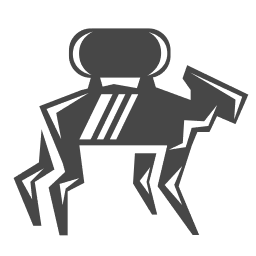 [Escort] :
[Escort] :
The objective of Escort is for the offensive team to deliver a mobile payload on a fixed path to the final objective, while the defending team attempts to prevent this. The offensive team escorts the payload when an offensive player is within its vicinity. If the payload has not been interacted with by the offensive team for 30 seconds, the payload will move backwards.
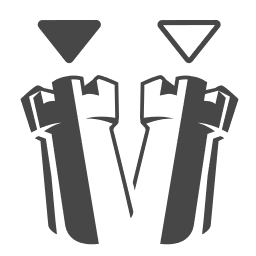 [Zone Control] :
[Zone Control] :
The objective of Zone Control is for the offensive team to capture 5 control points while the defending team attempts to prevent this. The offensive team captures the points by standing on them, and they are captured after 30 seconds. The capture rate increases based on the amount of attackers on the point.
• Top Down :
You can click on the circles to see a screenshot of the location.
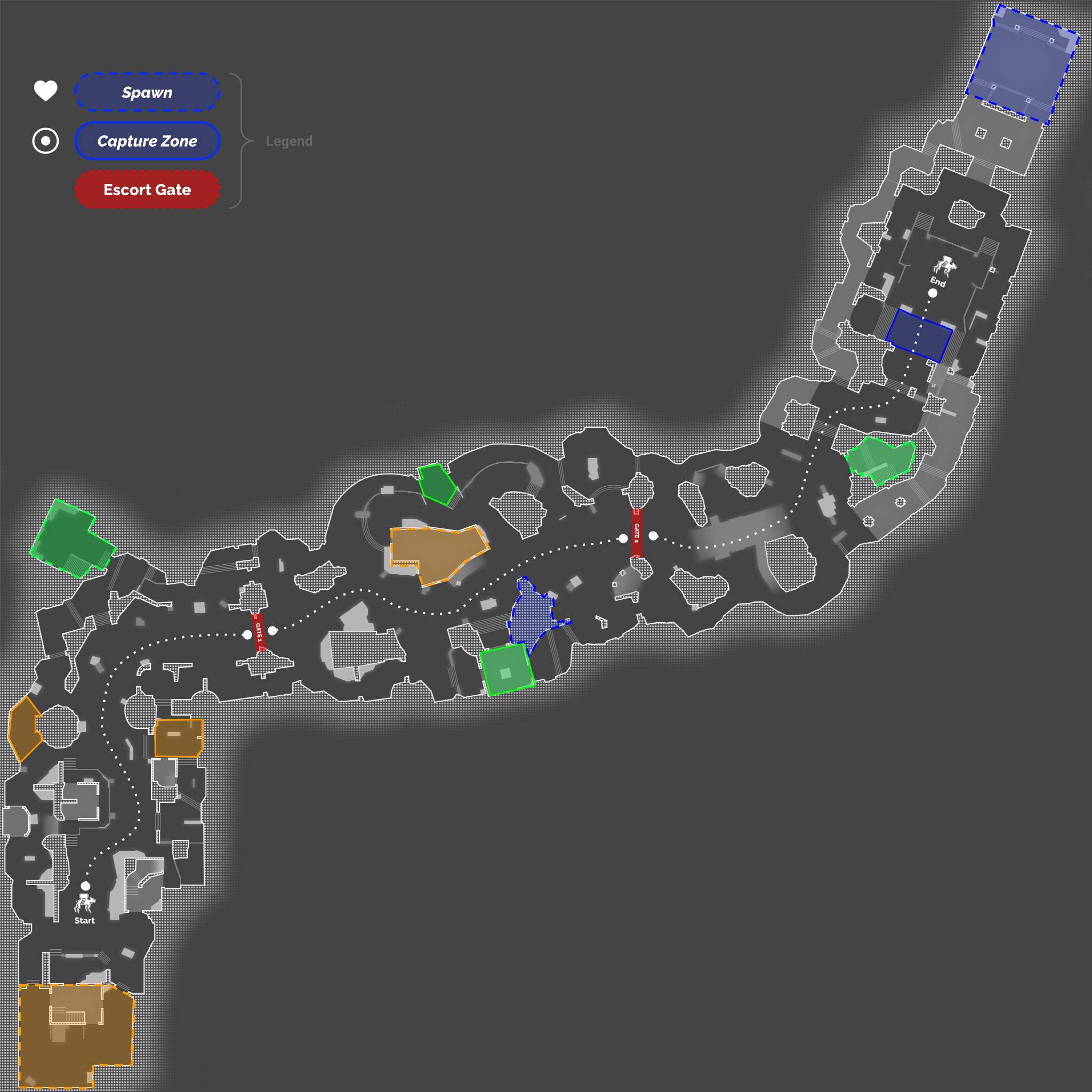
Attacker Spawn – Beat 01 :
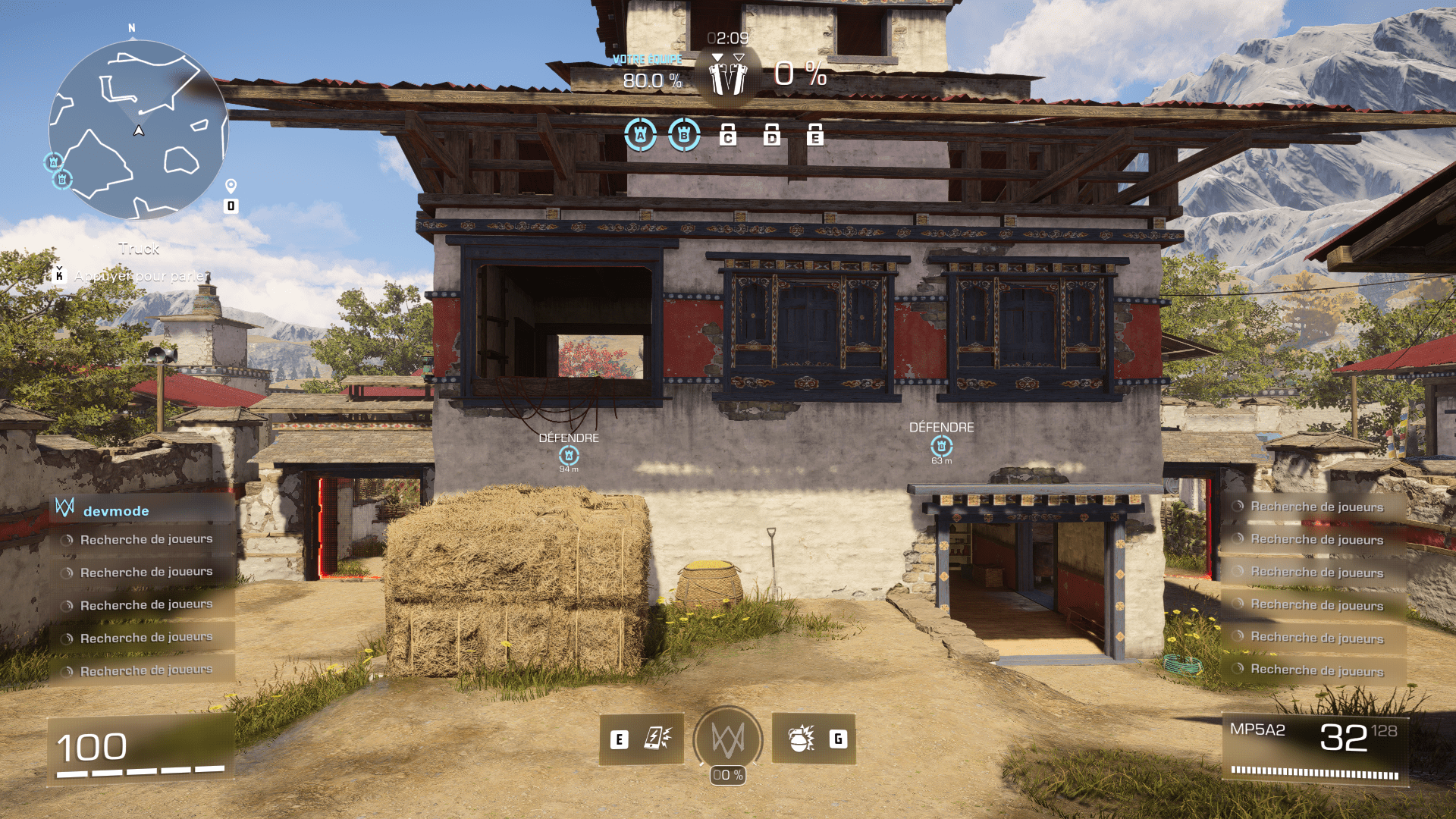
Defender Spawn – Beat 01 :
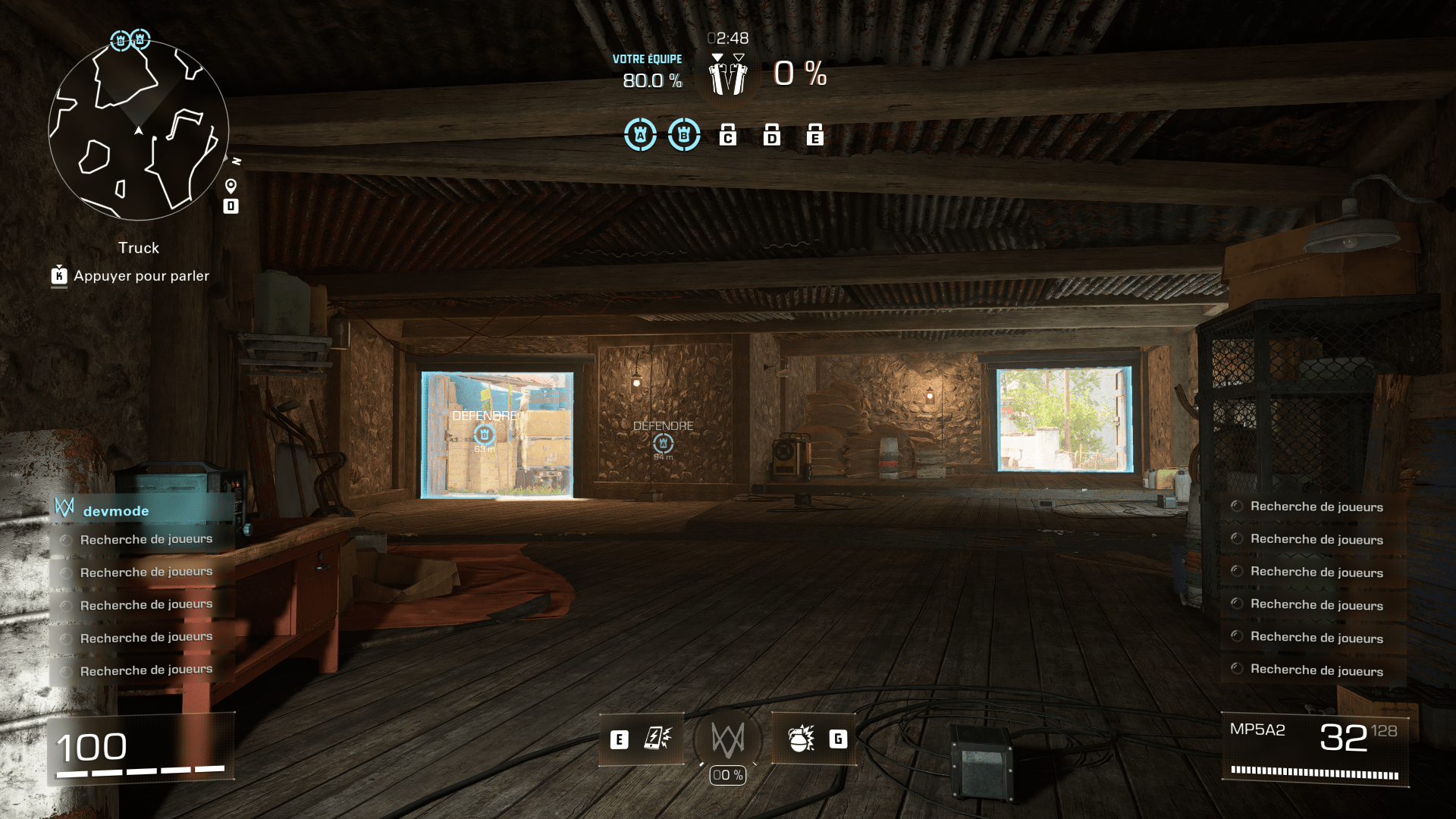
Zone Control Right – Beat 01 :
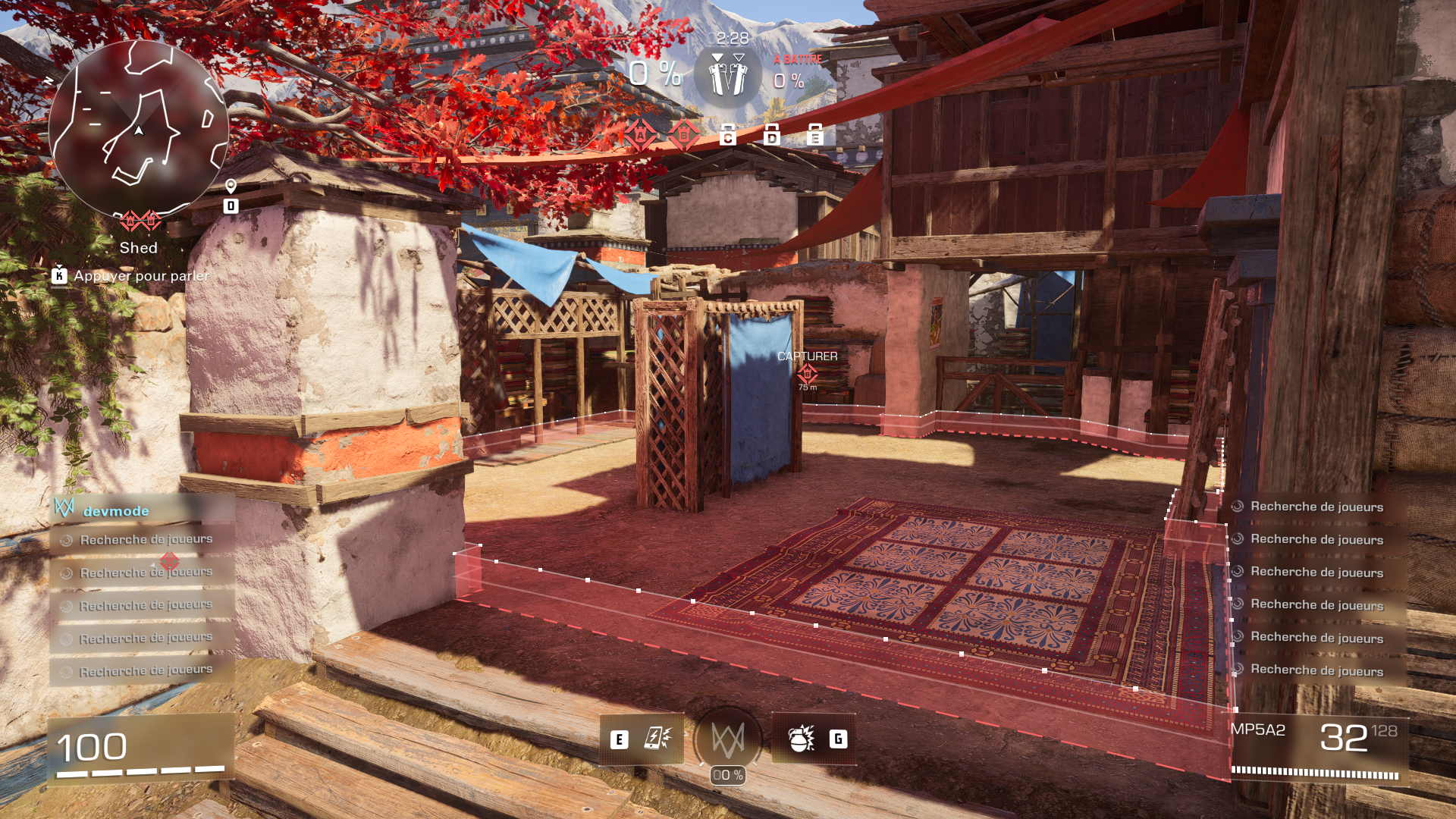
Zone Control Left – Beat 01 :
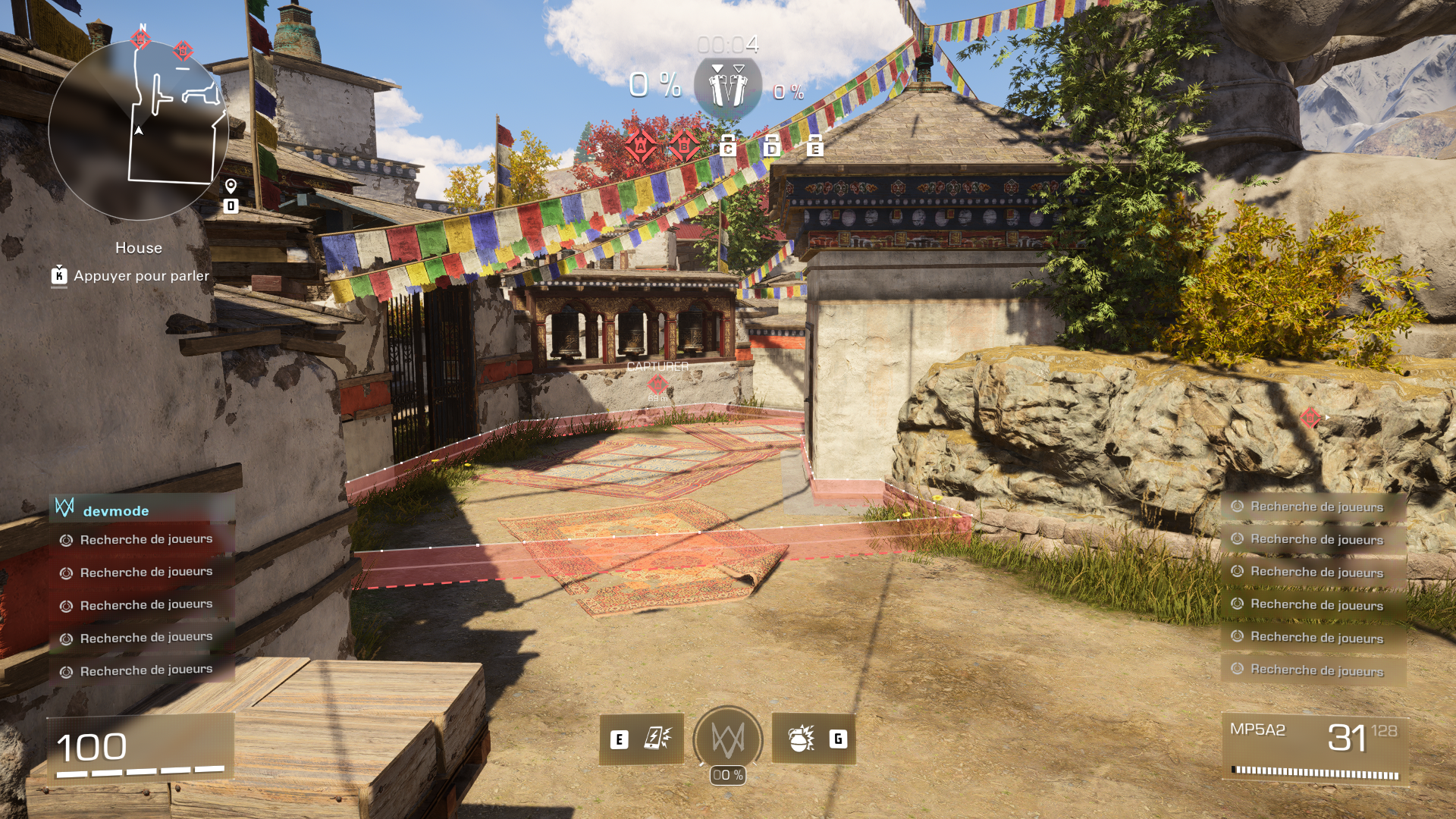
Attacker Spawn – Beat 02 :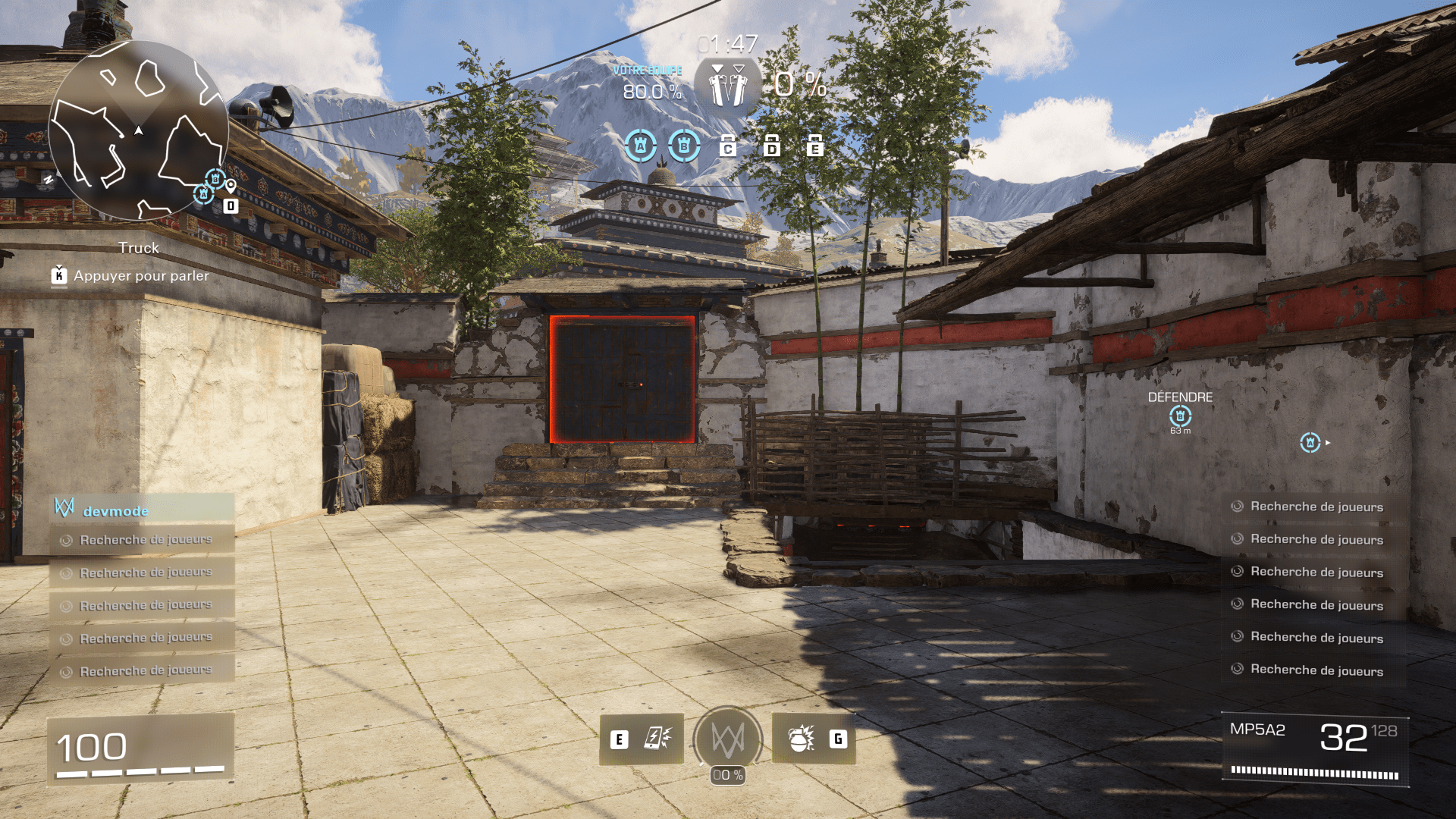
Defender Spawn – Beat 02 :
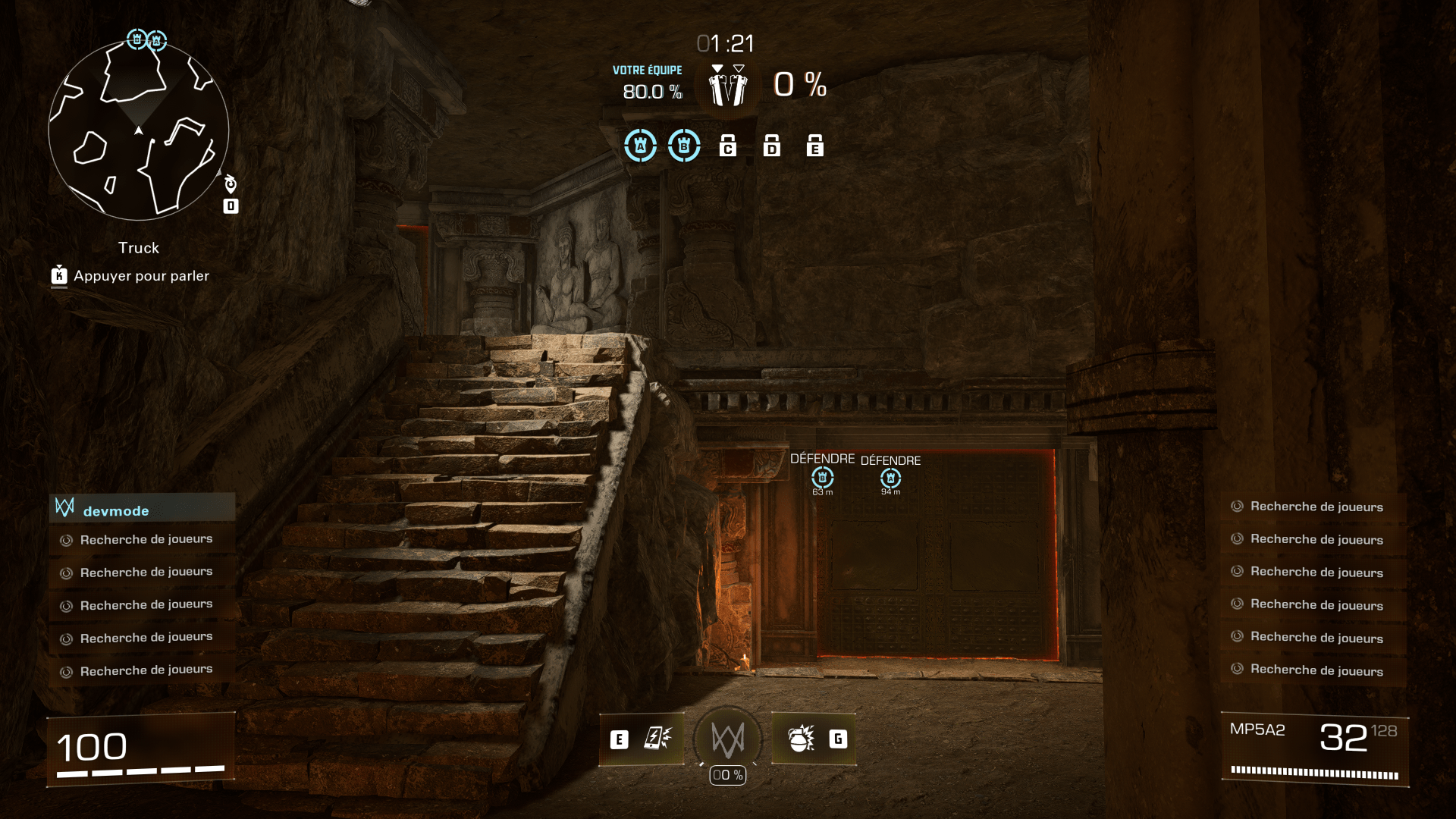
Zone Control Right – Beat 02 :
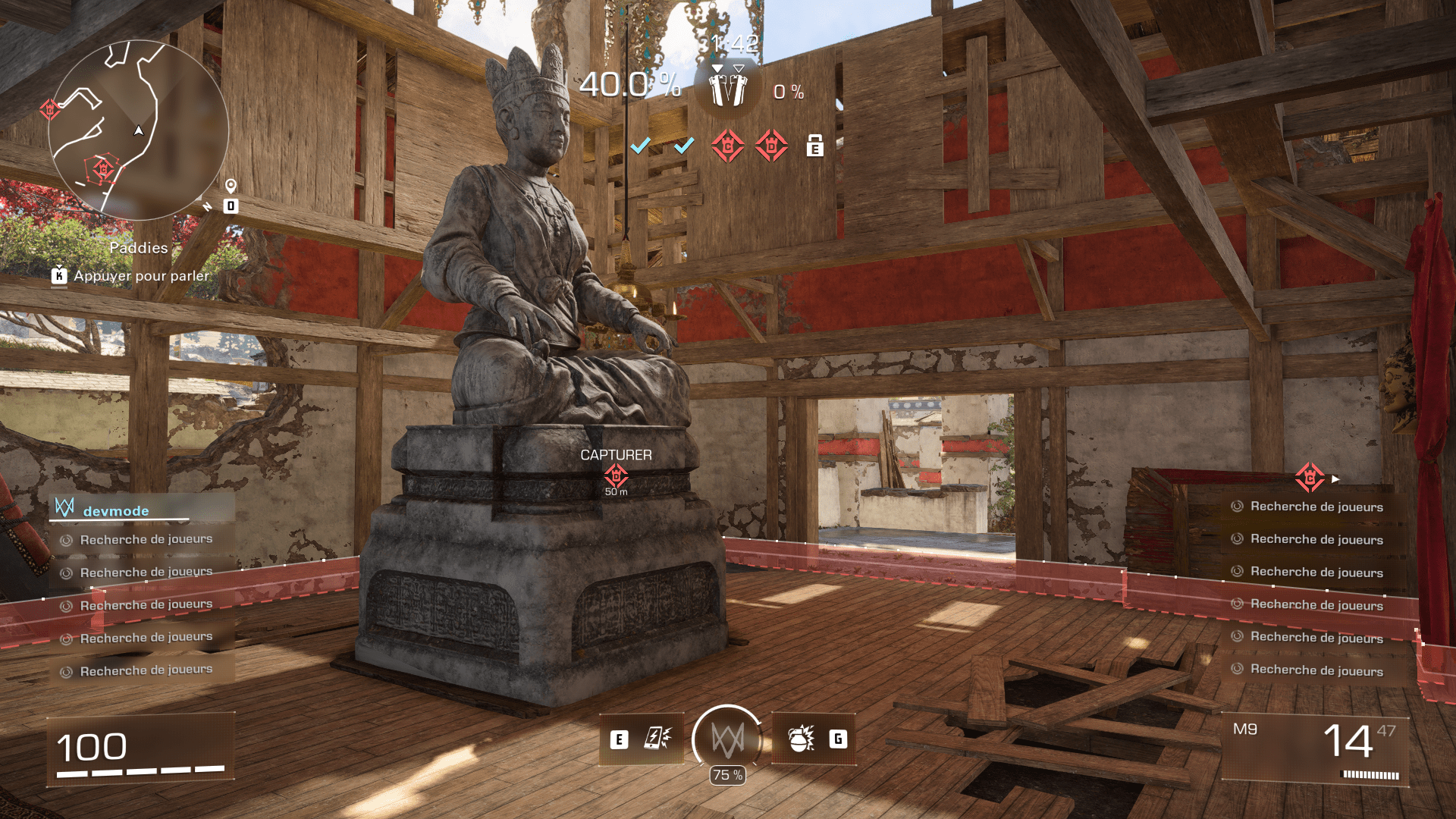
Zone Control Left- Beat 02 :
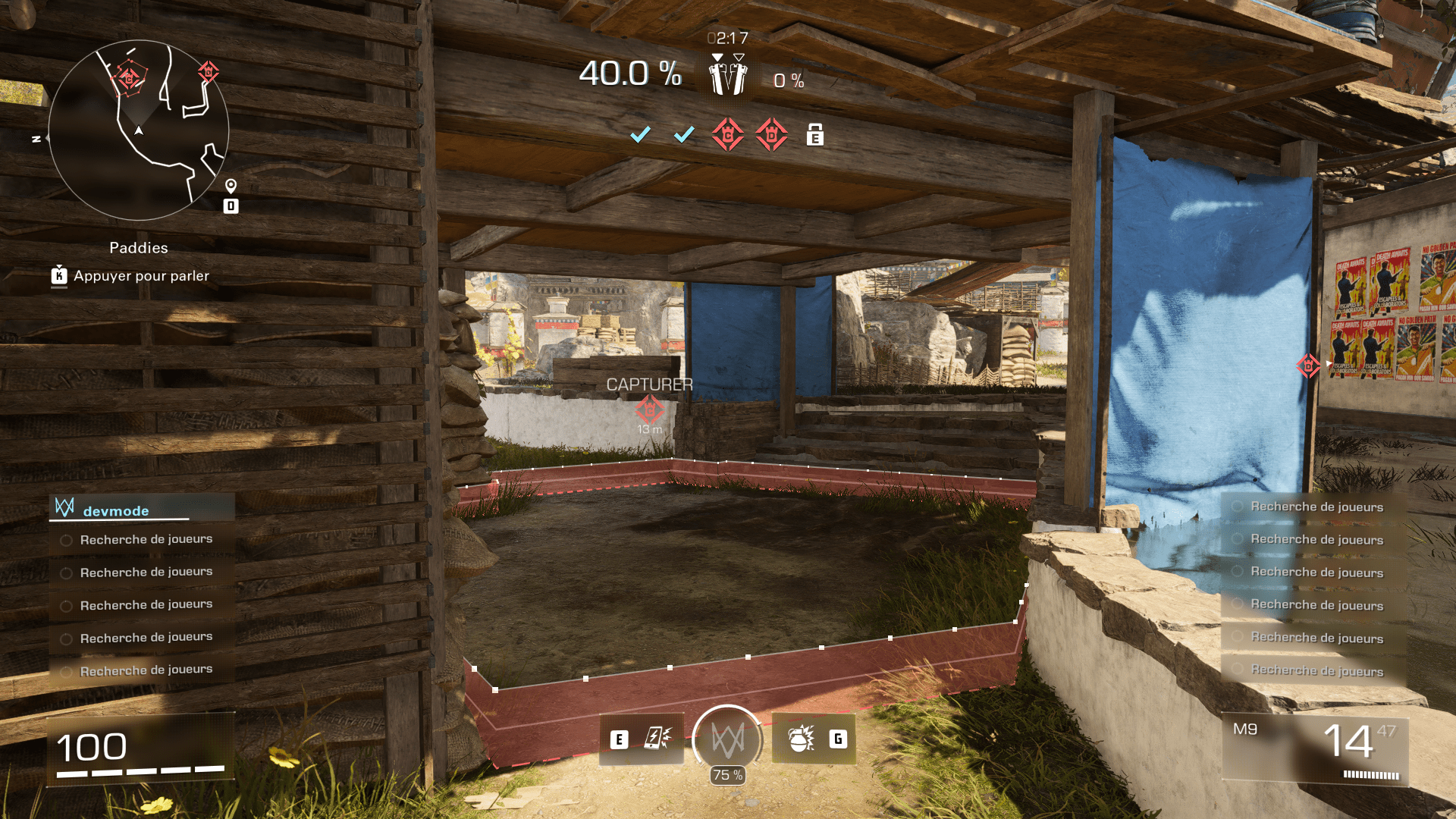
Attacker Spawn – Beat 03 :
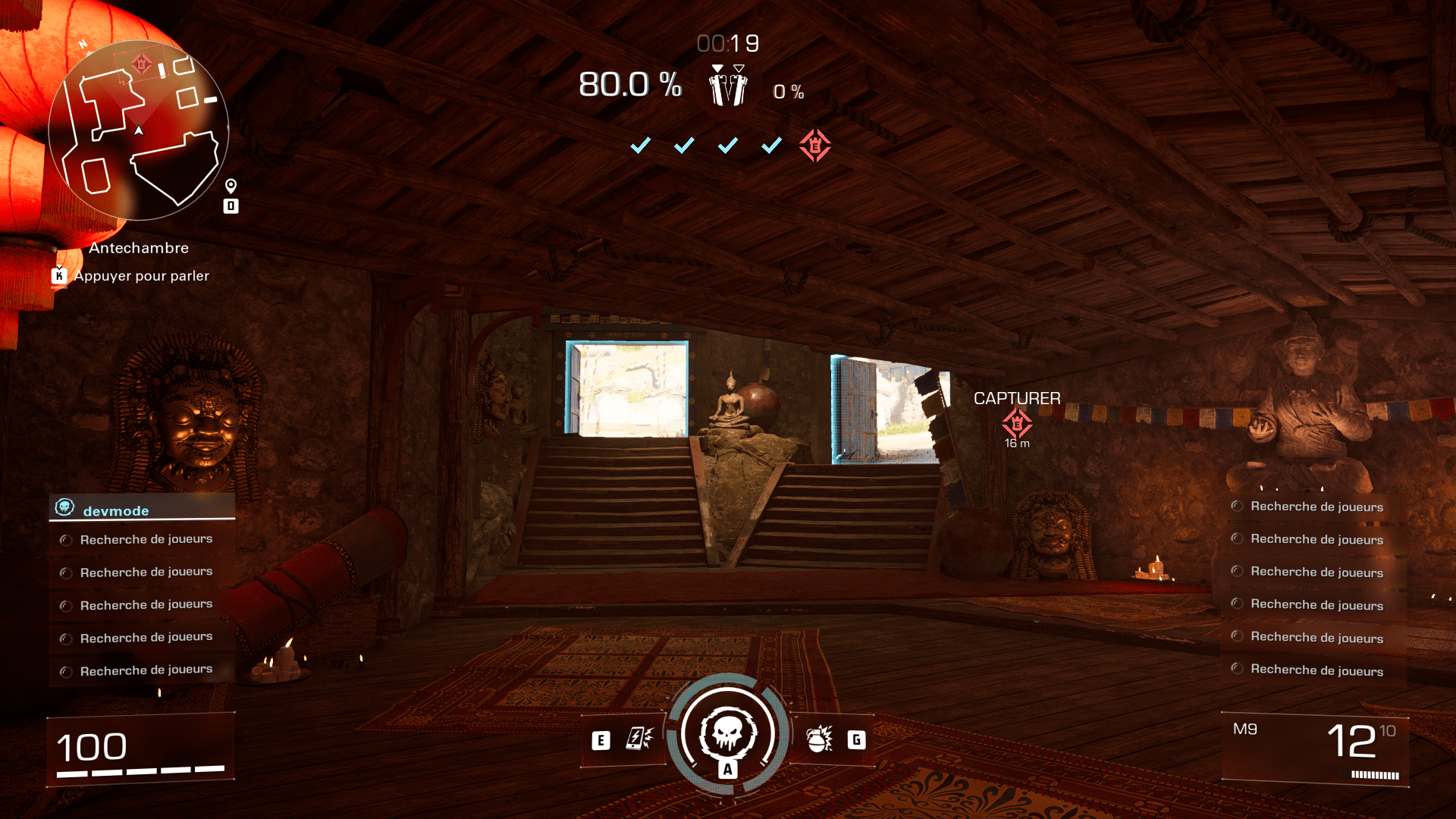
Defender Spawn – Beat 03 :
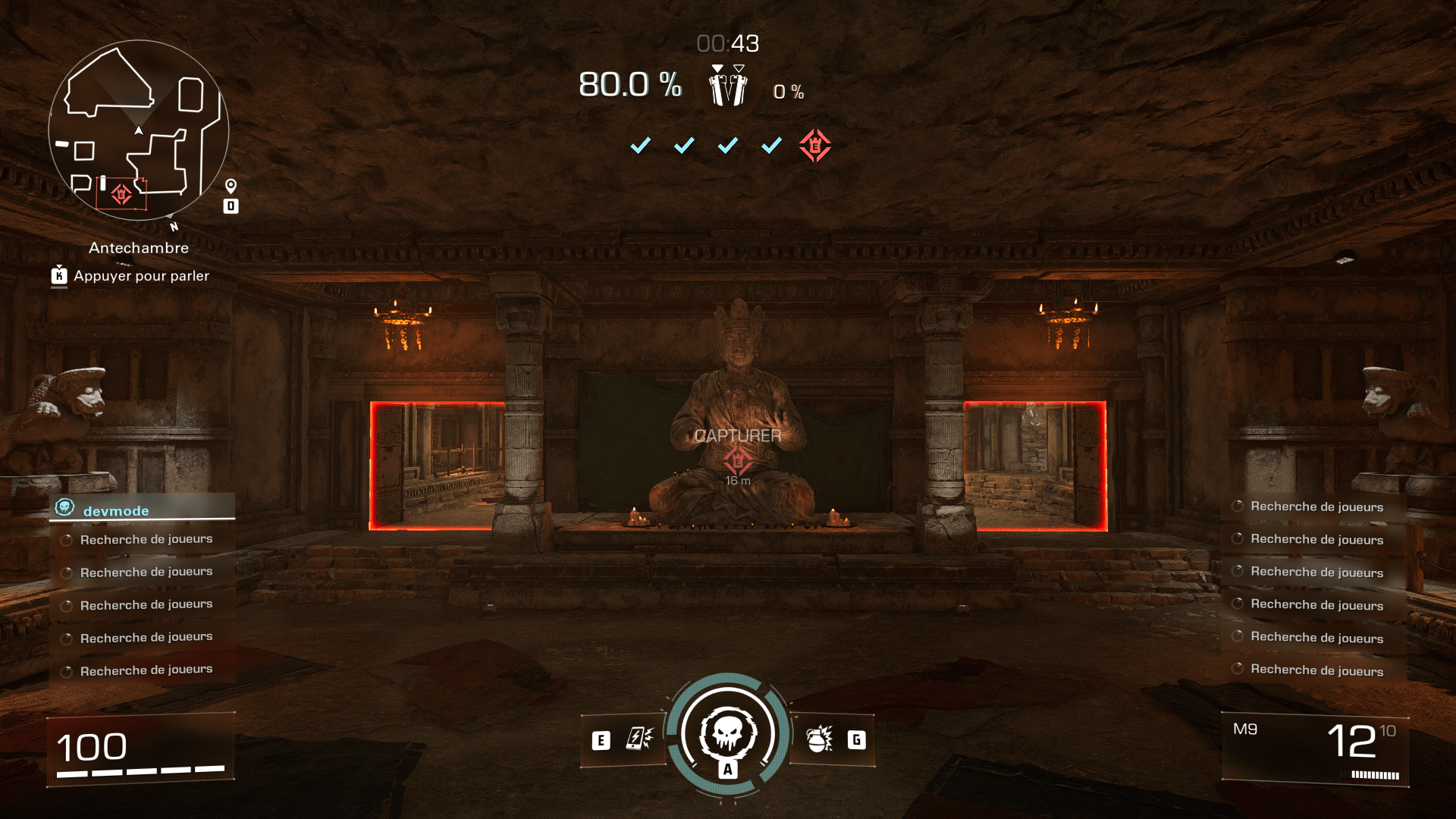
Zone Control Middle – Beat 03 :
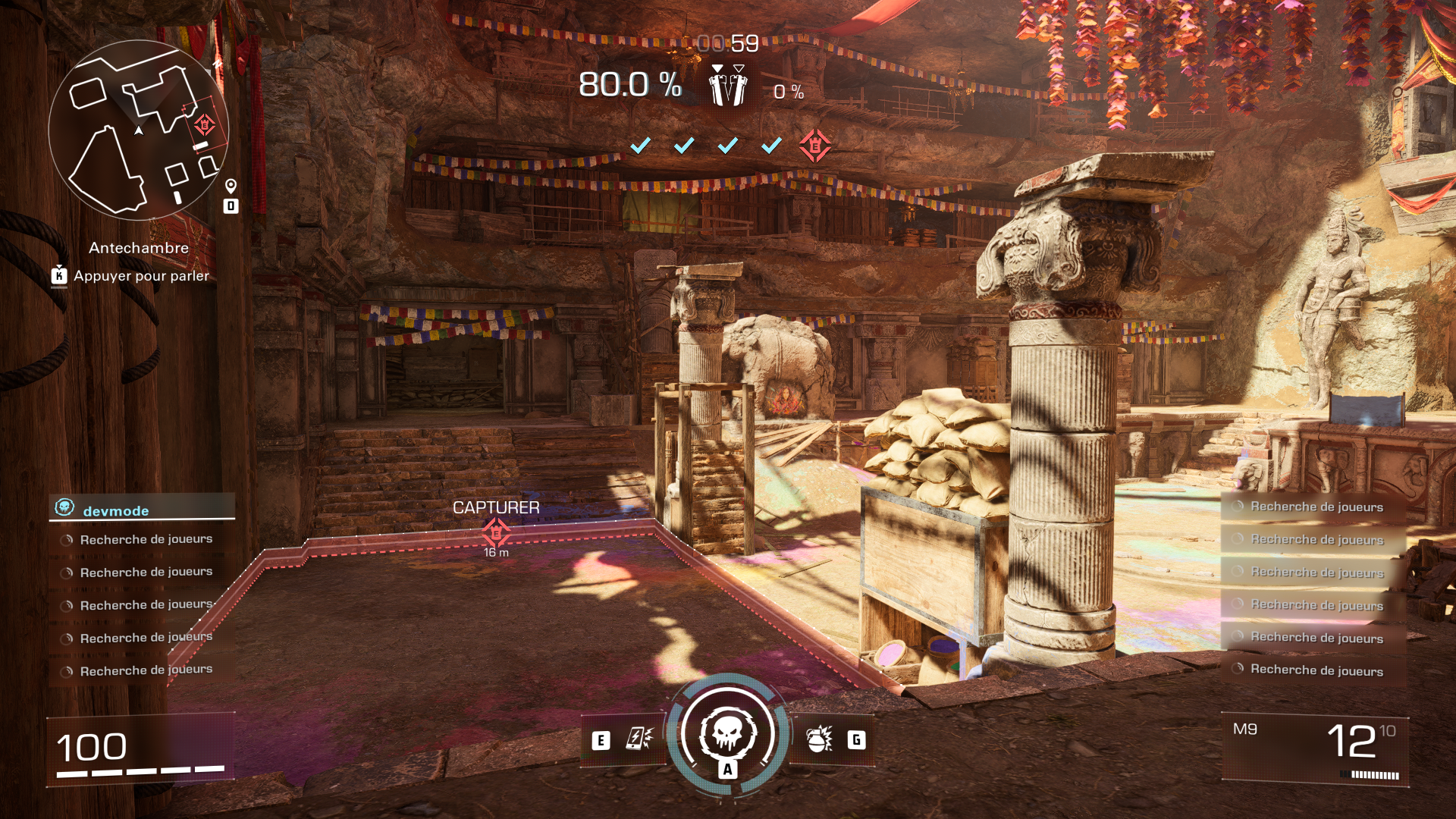
• Balancing :
> Macro :
Balancing is done in different ways, the first and simplest being the distance between the spawn and the objective. The advantaged team will be able to arrive more quickly after a respawn to defend or attack the objective.
For linear maps, the guideline is to achieve an average 80% winrate for Beat 01, around 65% for Beat 02, and 50% for the last part. The idea is to avoid having a game that ends too quickly, and let the player enjoy and build tension as the game progresses.
We can see below that for Beat 1, the Attackers are closer to the target. For B2, we’re at an equal distance. The advantages are played out on more micro positions that favor certain teams. And for Beat 3, the attackers are further from the objective.
> Micro :
It’s possible to create more or less strong positions with a vantage point, a cover that is sufficiently protected from the L/U-shaped flank (or, conversely, a tendency to be flanked easily).
But it’s also possible to create zones that encourage the use of long-distance weapons.
The number of attack vectors will also play a role in balancing. In most cases, when they are not open area, we avoid having more than 3.
[BEAT 01] – The objective of 80% winrate for the attackers :
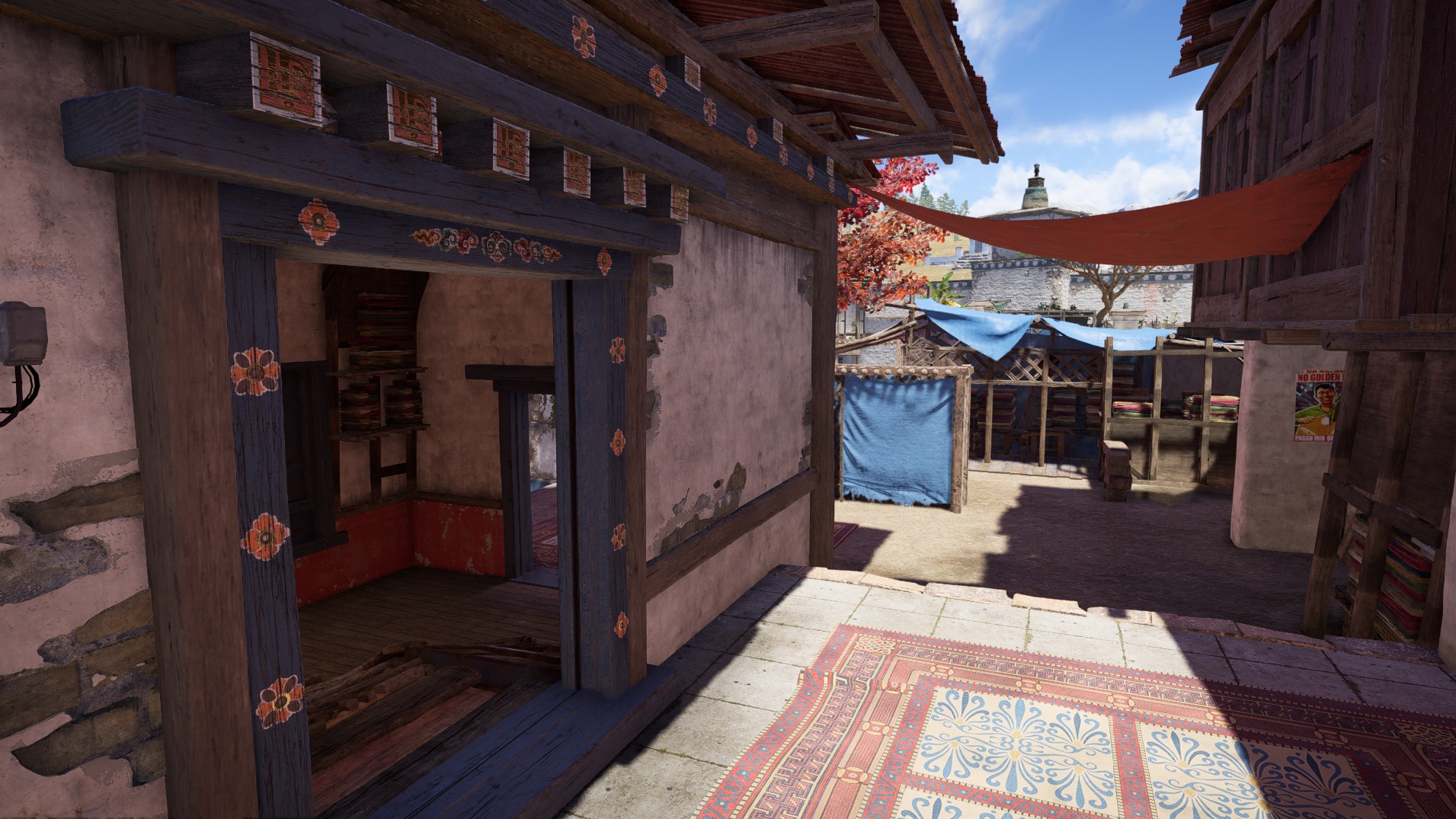
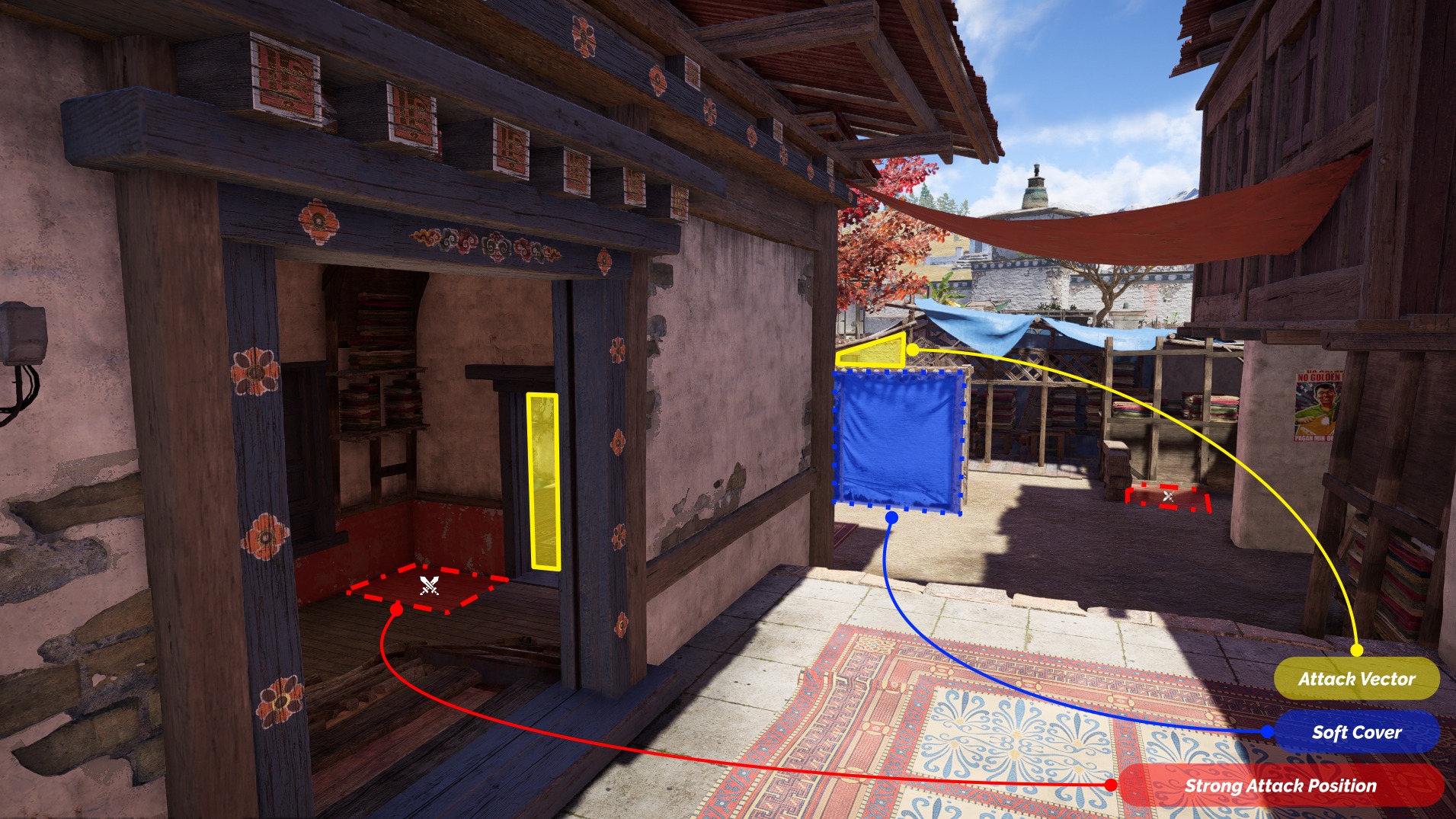
We’re going to favor strong positions for the attackers when they attack the Capture Zone. And the defenders will have more exposed positions and will be less able to defend this point.
The use of the Soft Cover (balls passing through) in the center of the zone as a Line Of Sight Breaker is voluntary, as it favors the attackers, since the defenders will mainly come from the same path, which is not the case for the attackers.

[BEAT 03] – The objective of 50% winrate :
Both teams have an equal chance of winning. The defenders’ spawn is rather close to the Capture Zone.
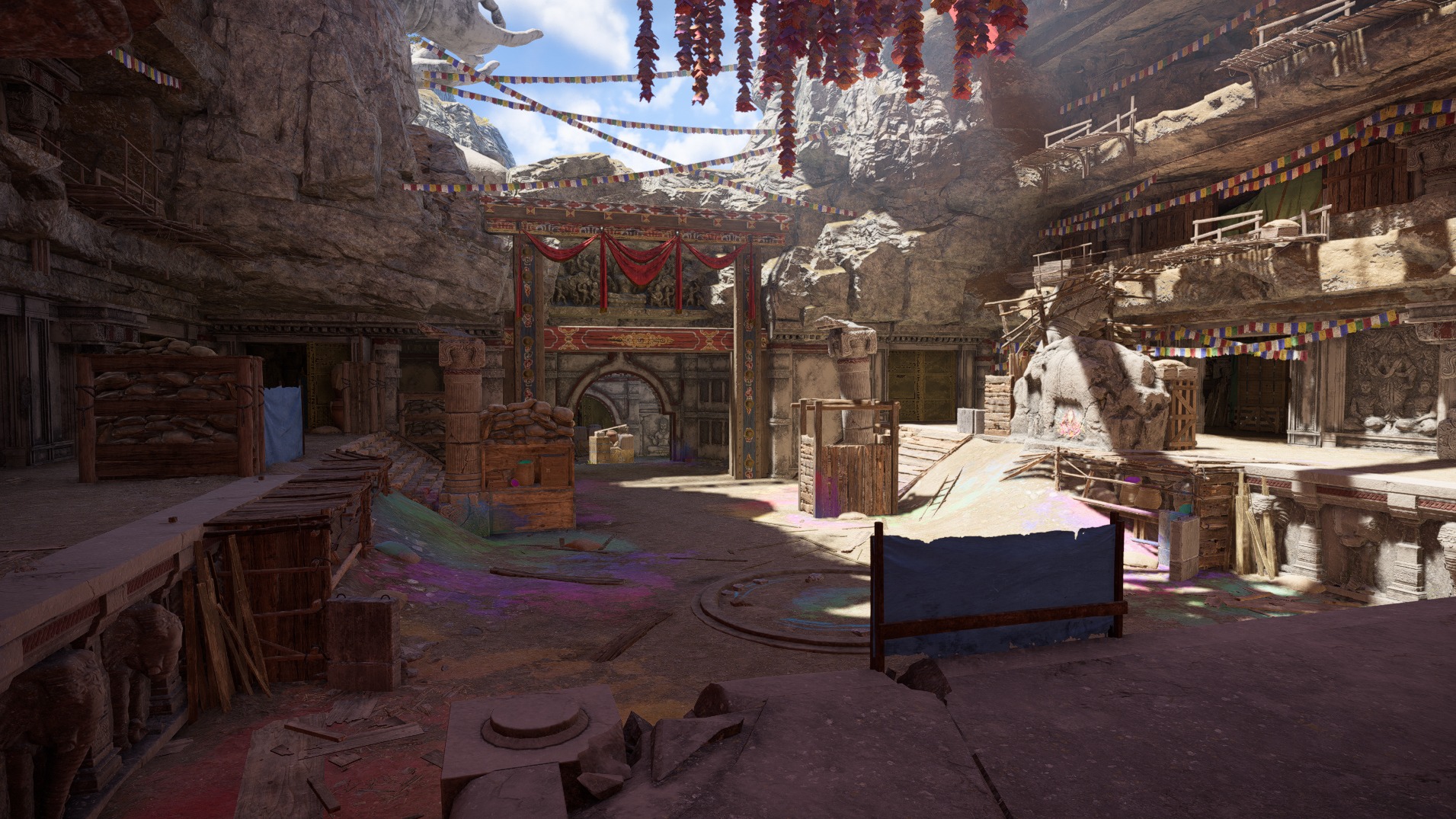
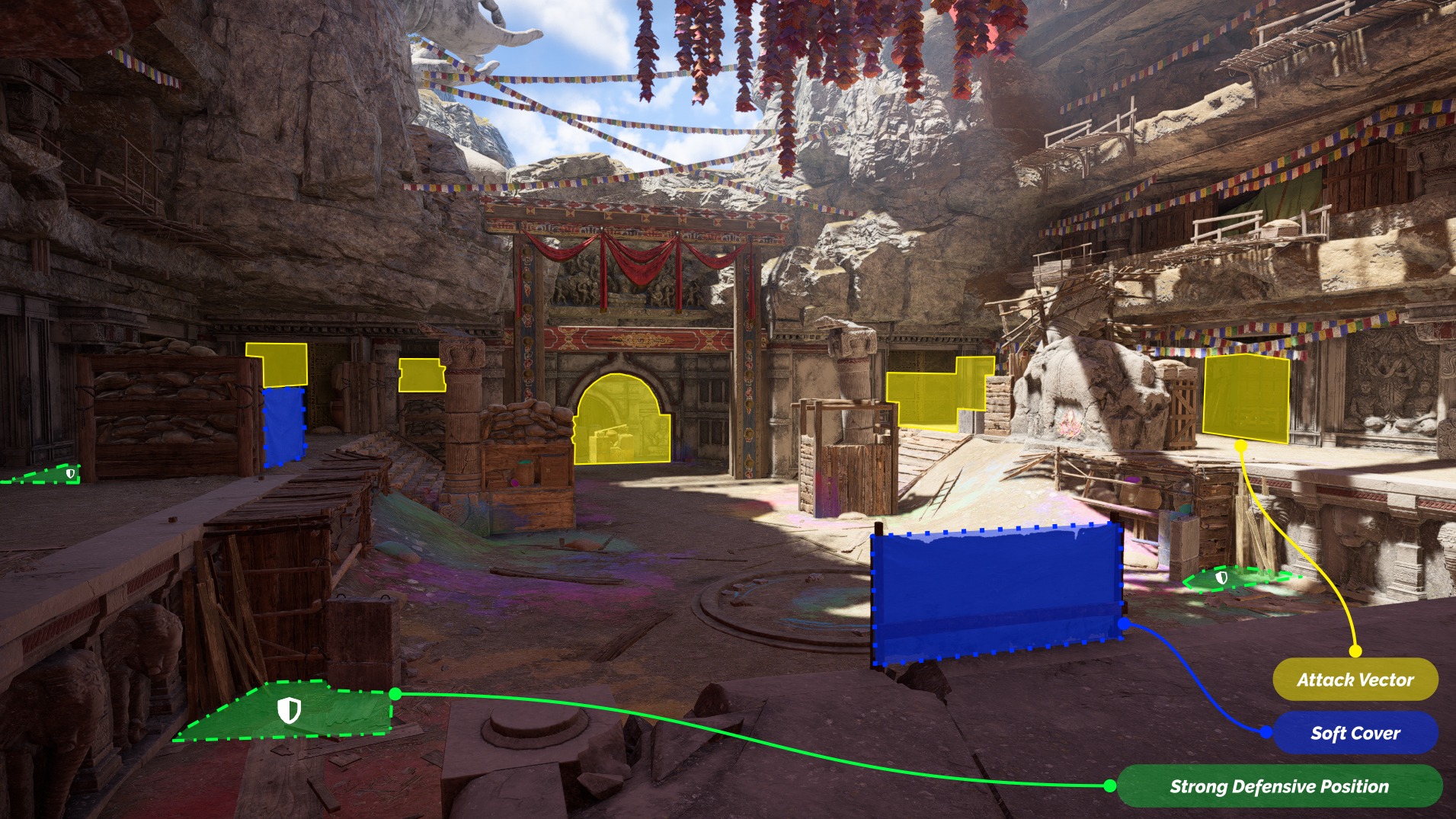
The challenge here was to manage the arena aspect (Far Cry 4: Shanath Arena), which creates a open area. It was therefore essential to break certain Lines Of Sight and avoid positions that could be too strong on either side. Attackers retain the advantage of powerful positions, as their spawns are much further away.

• Collision Optimization :
A rather invisible part for players, but one that was of notorious importance, was to optimize ground collisions for the player.
As 3Cs are very sensitive to collisions with objects on the ground, this creates a “headbobbing” effect. It was therefore recommended to improve these collision transitions in order to limit this effect.
To achieve this, we had to deactivate collisions with ground objects as far as possible, and in some cases create transition ramps to smooth the different heights.
This brought a real polish to the map, and the aim of the game was to be competitive, so players shouldn’t be destabilized by collision changes that could impact their aim.
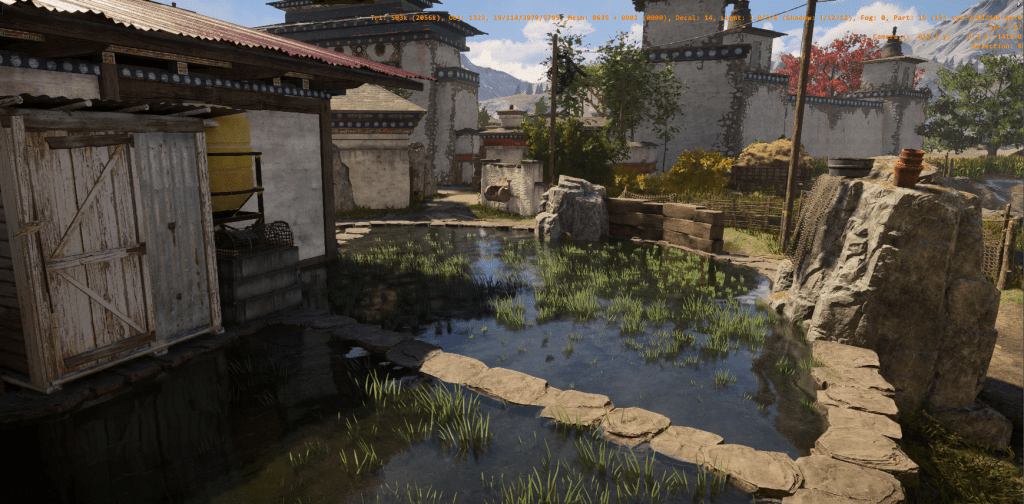
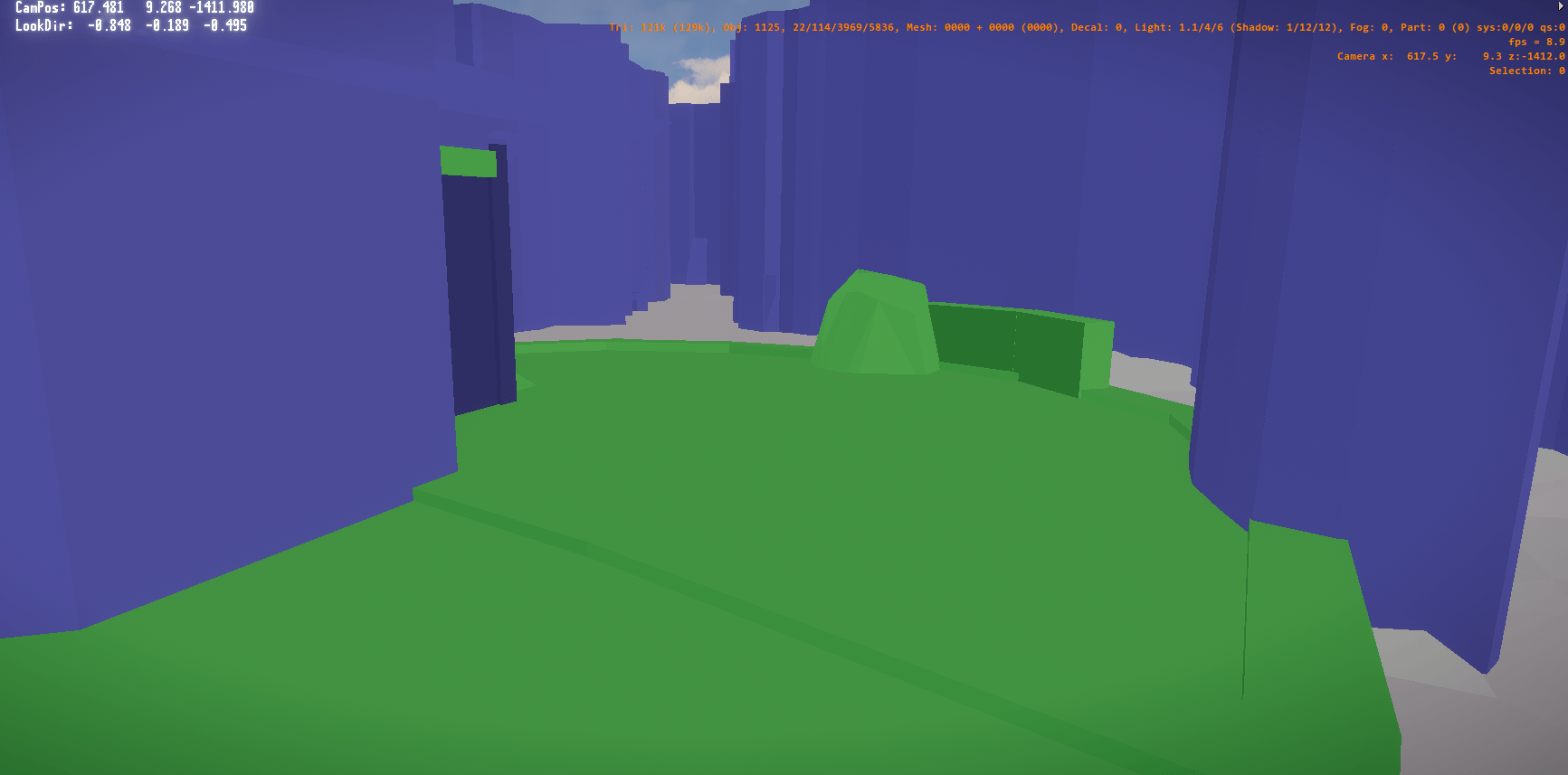
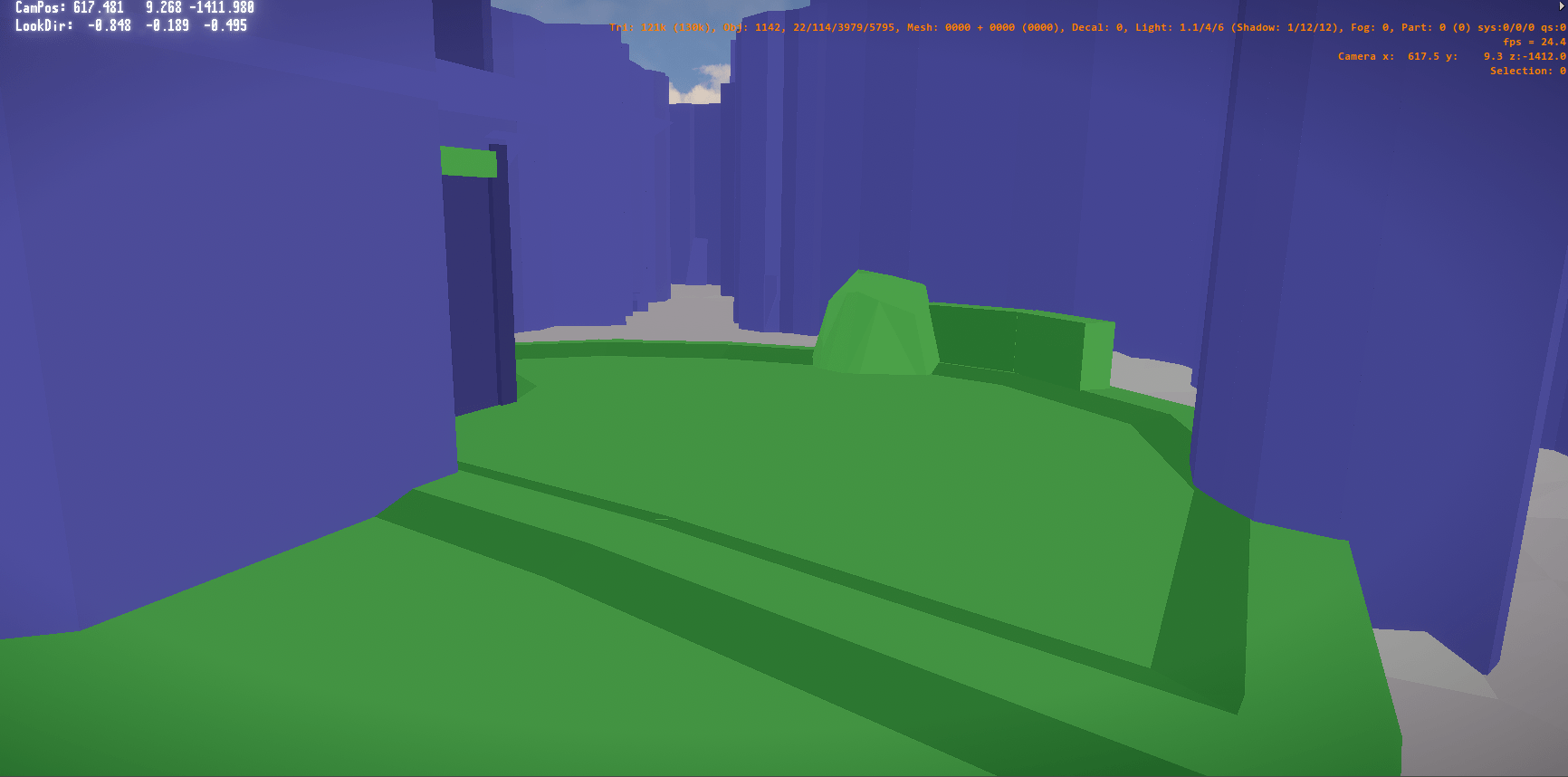
• Iteration Communication :
Every week, I sent out an e-mail with the new iterations I’d made during the week in relation to the feedback from the playsessions.
By doing this, I noticed that people were much more inclined to give feedback after play sessions, because they knew I was taking it on board and making changes.
So I did this throughout the production of the map. Here are a few examples of images I was able to incorporate into the mail, along with a few explanations of why this change was made and what it should bring.
In addition to having the images below, where possible, I added a topview of the map to allow my colleagues reading the e-mail to locate the changes on the map a little more precisely :
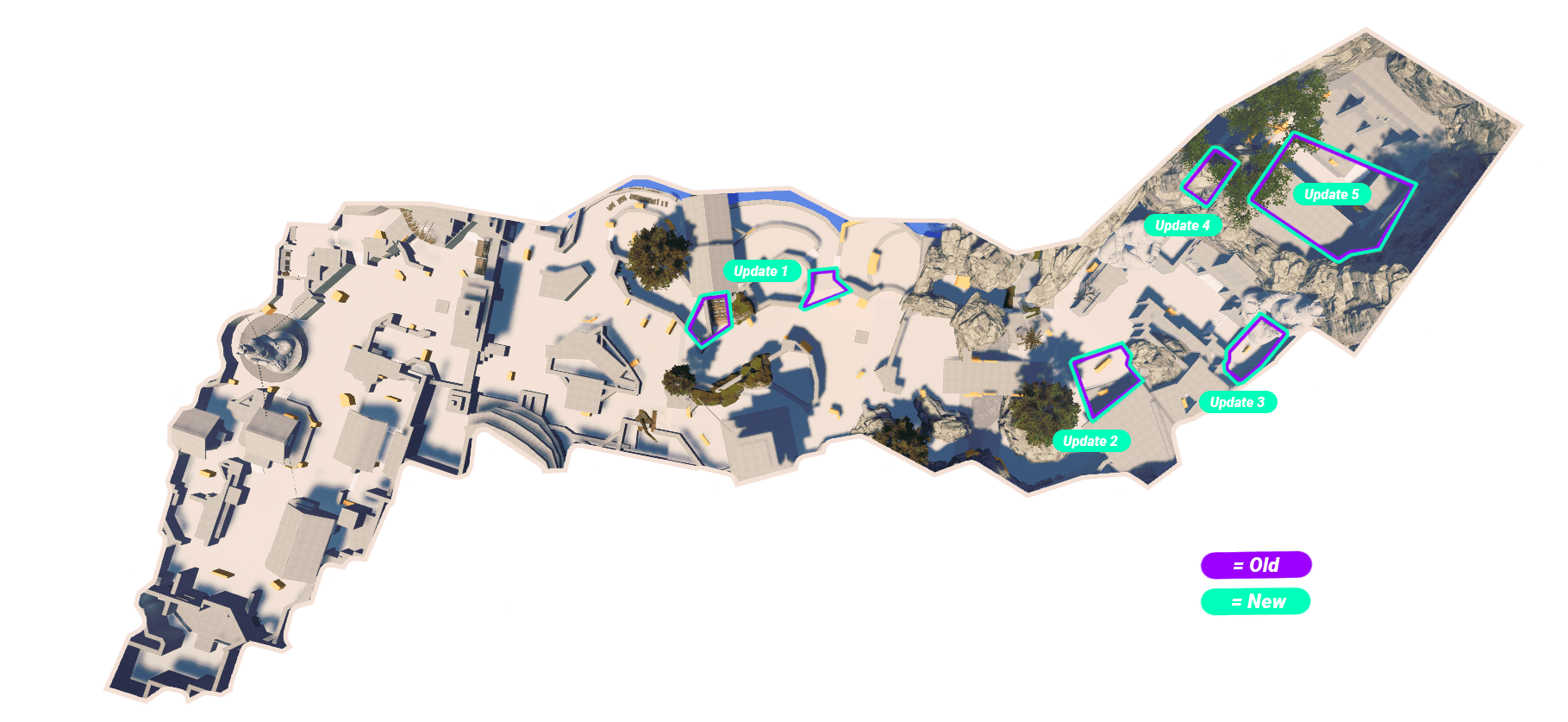
• Blockout to Art :
I came up with the idea of creating a video timelapse of the map’s evolution, and I did it on the different stages in order to share it with the team working with me on the map and show how far we’ve come and, above all, where we started from.
Because after several months of working on the same thing, you can quickly get the feeling that nothing is really progressing, when in fact, it’s not.
I also like to show the before/after between blockout and art. It sometimes shows how certain ideas can remain from start to finish, but also evolve greatly over the iterations.
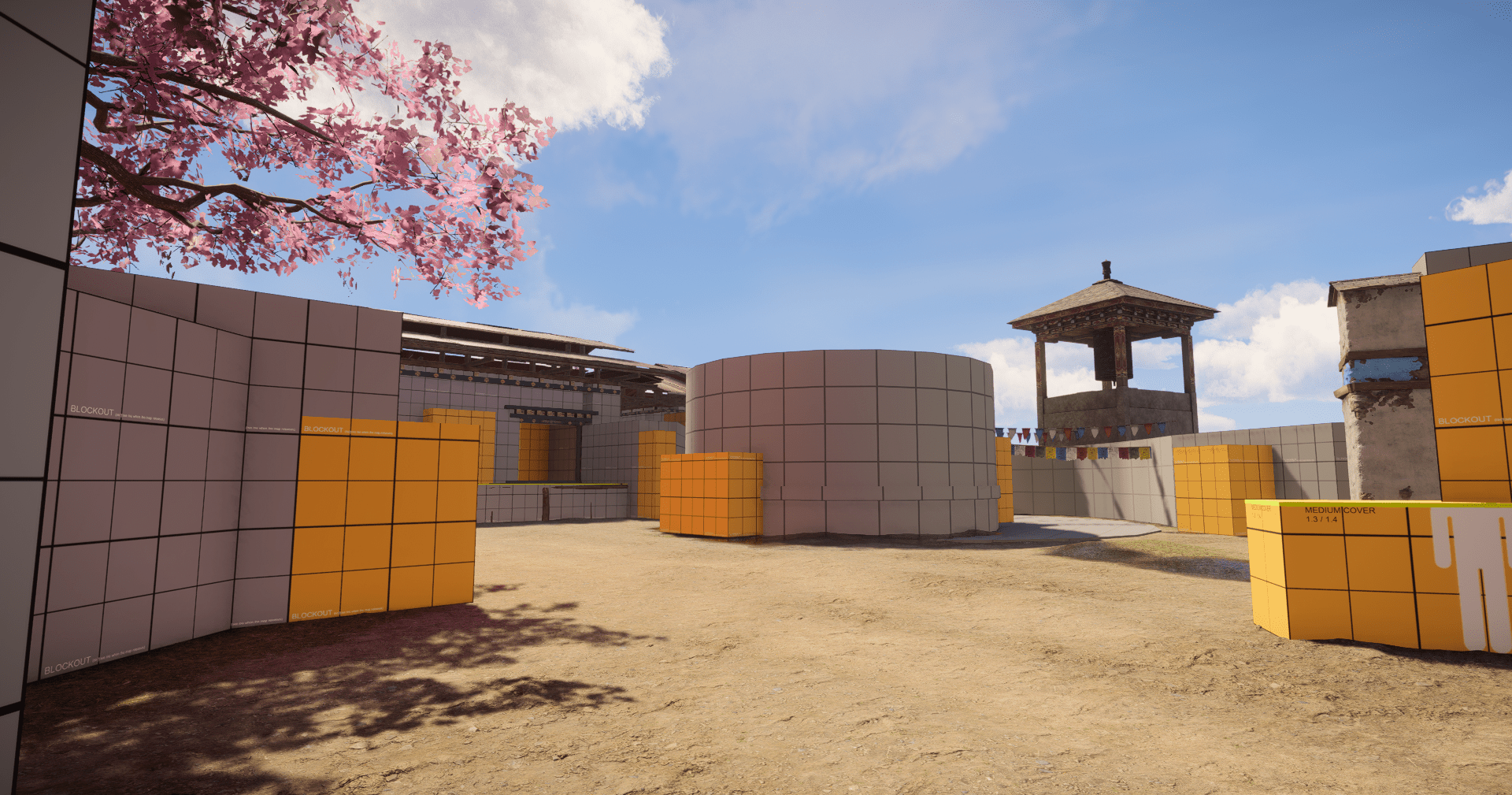
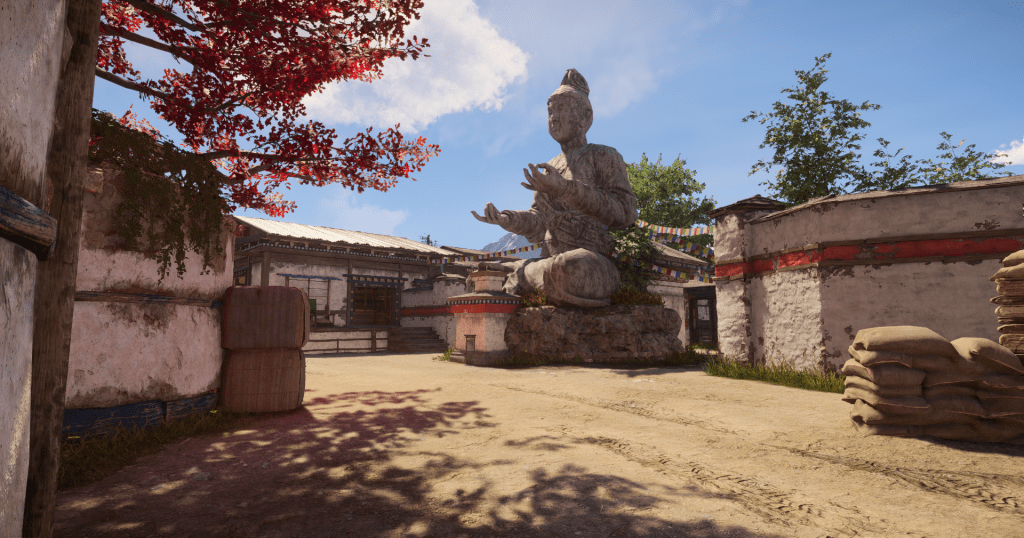
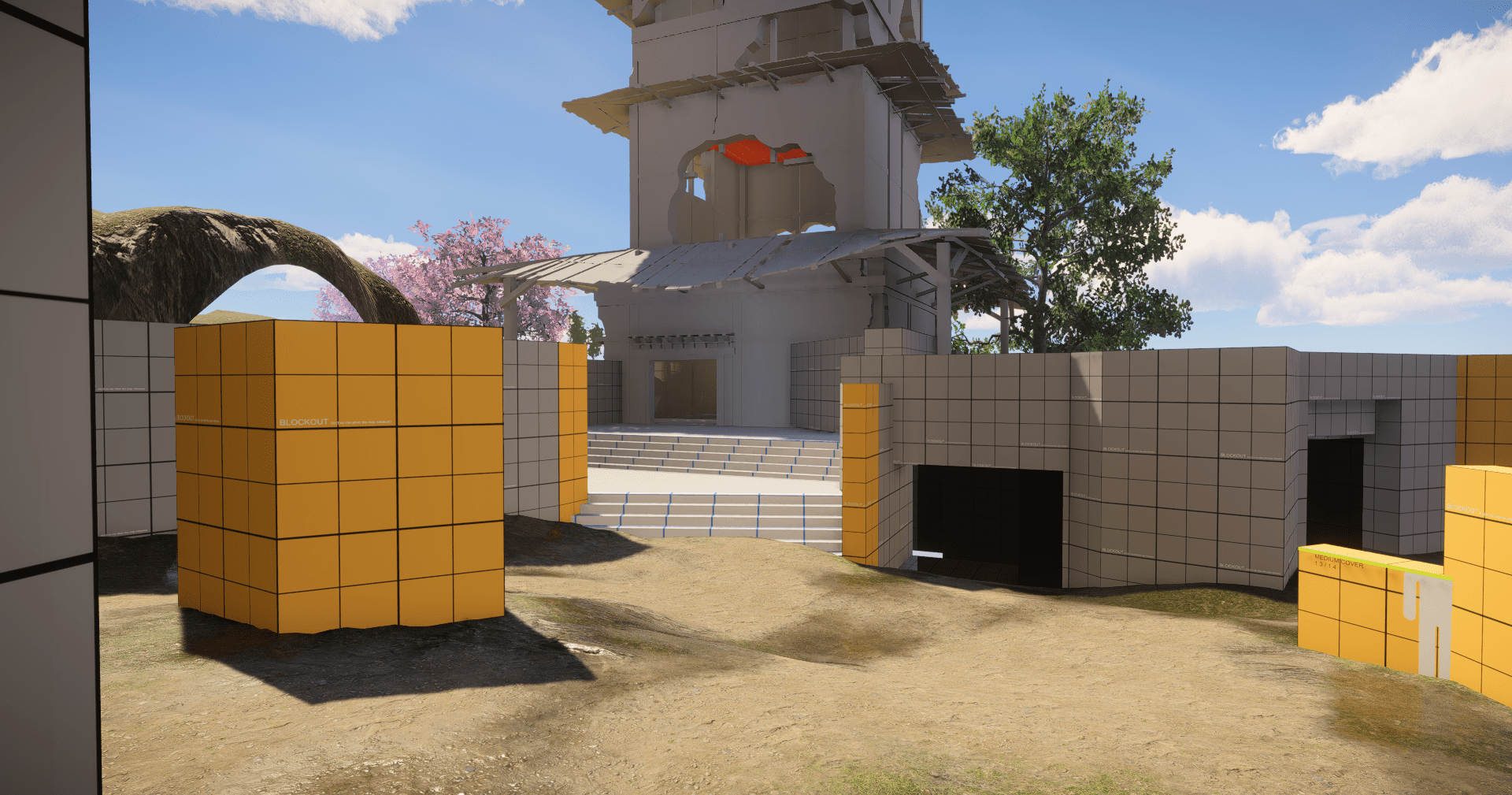
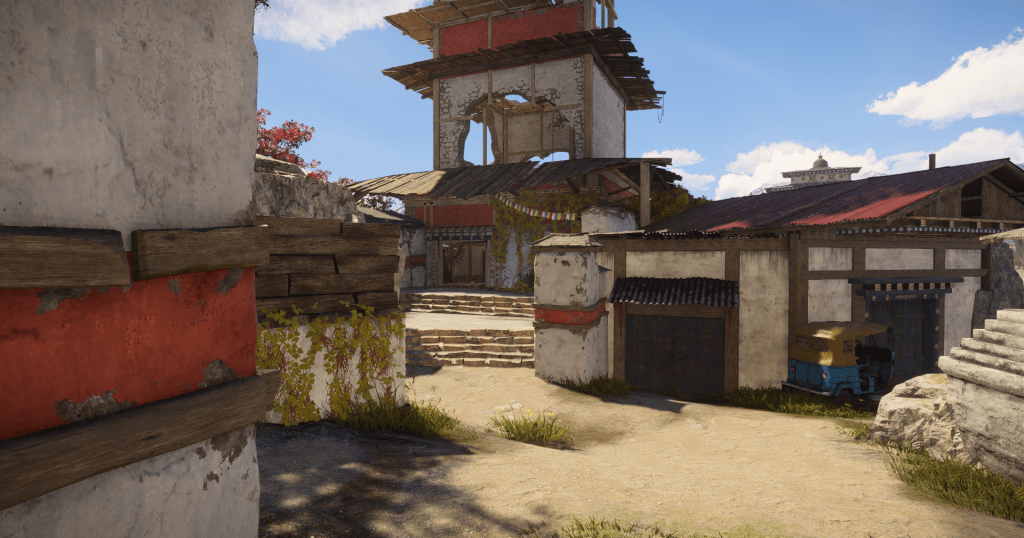
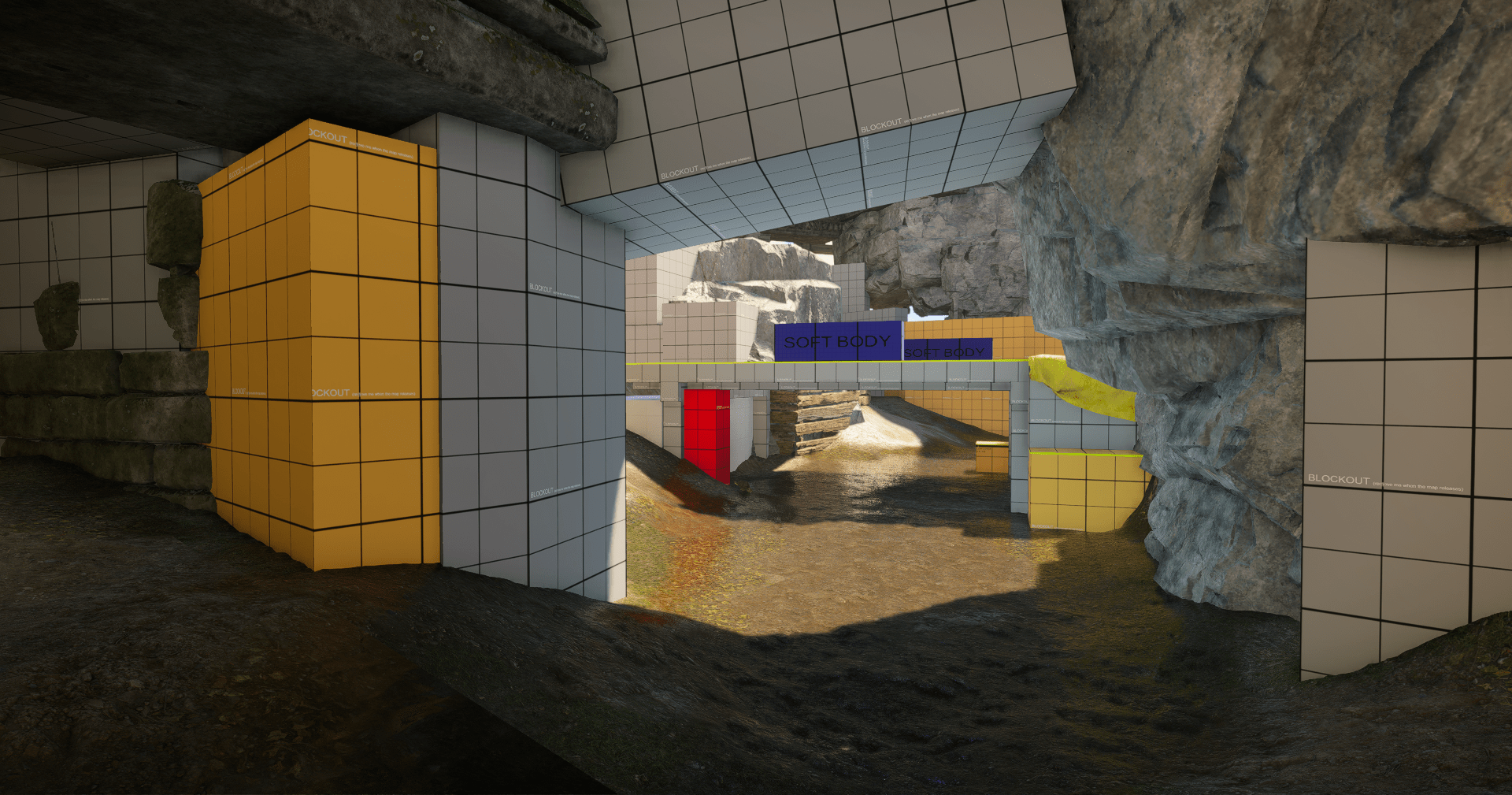
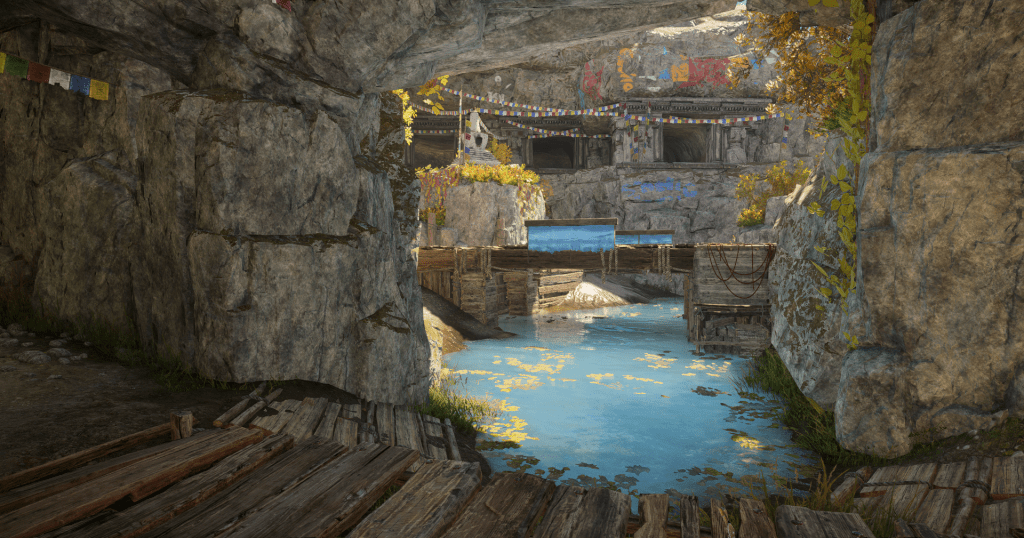
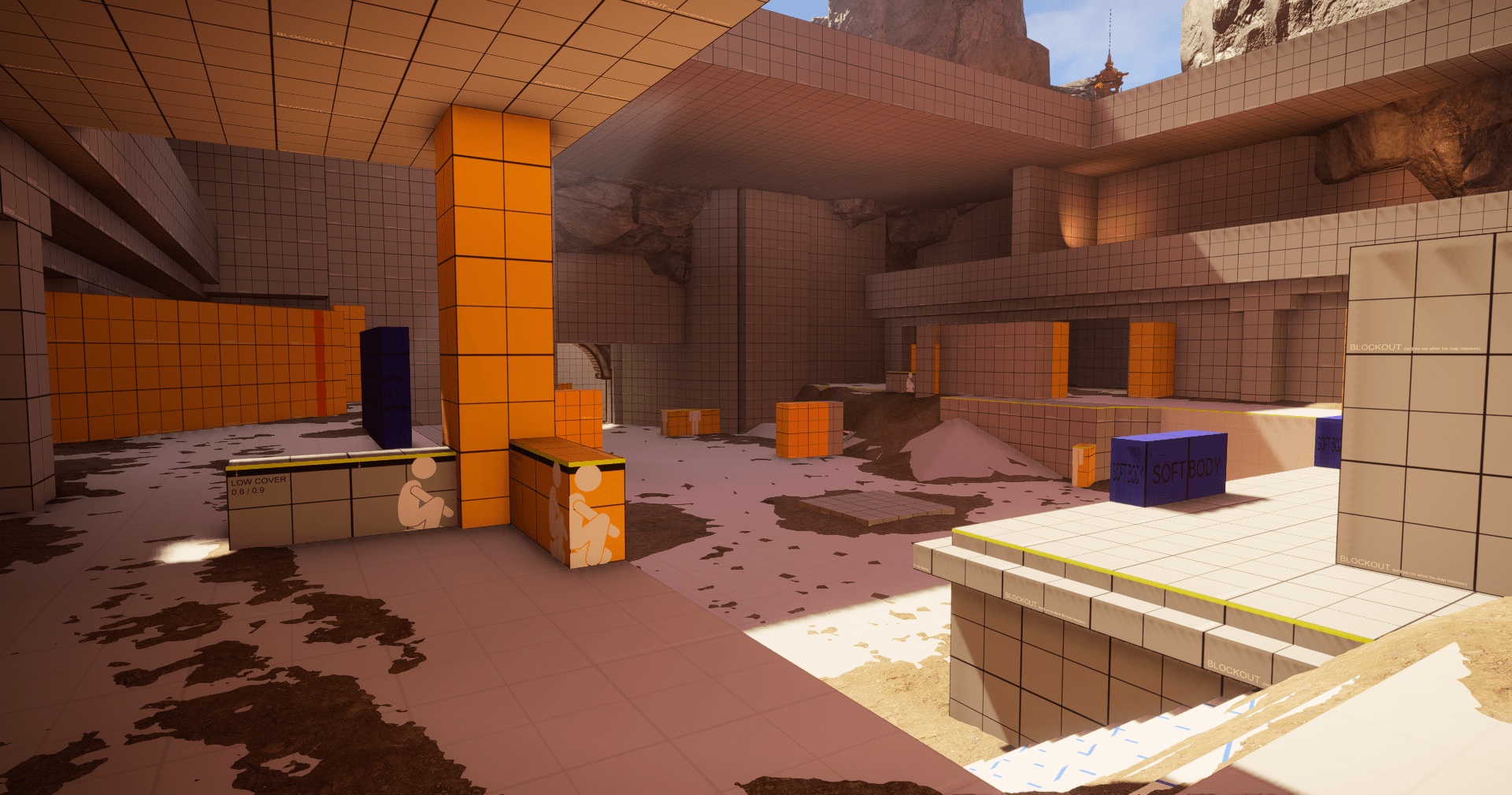
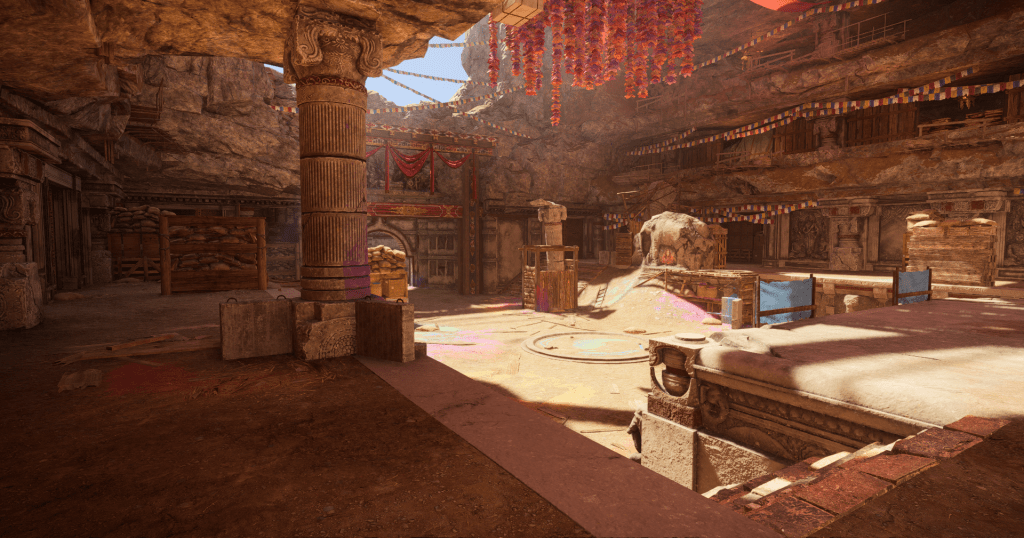
• Gameplay :
More Article(s) :
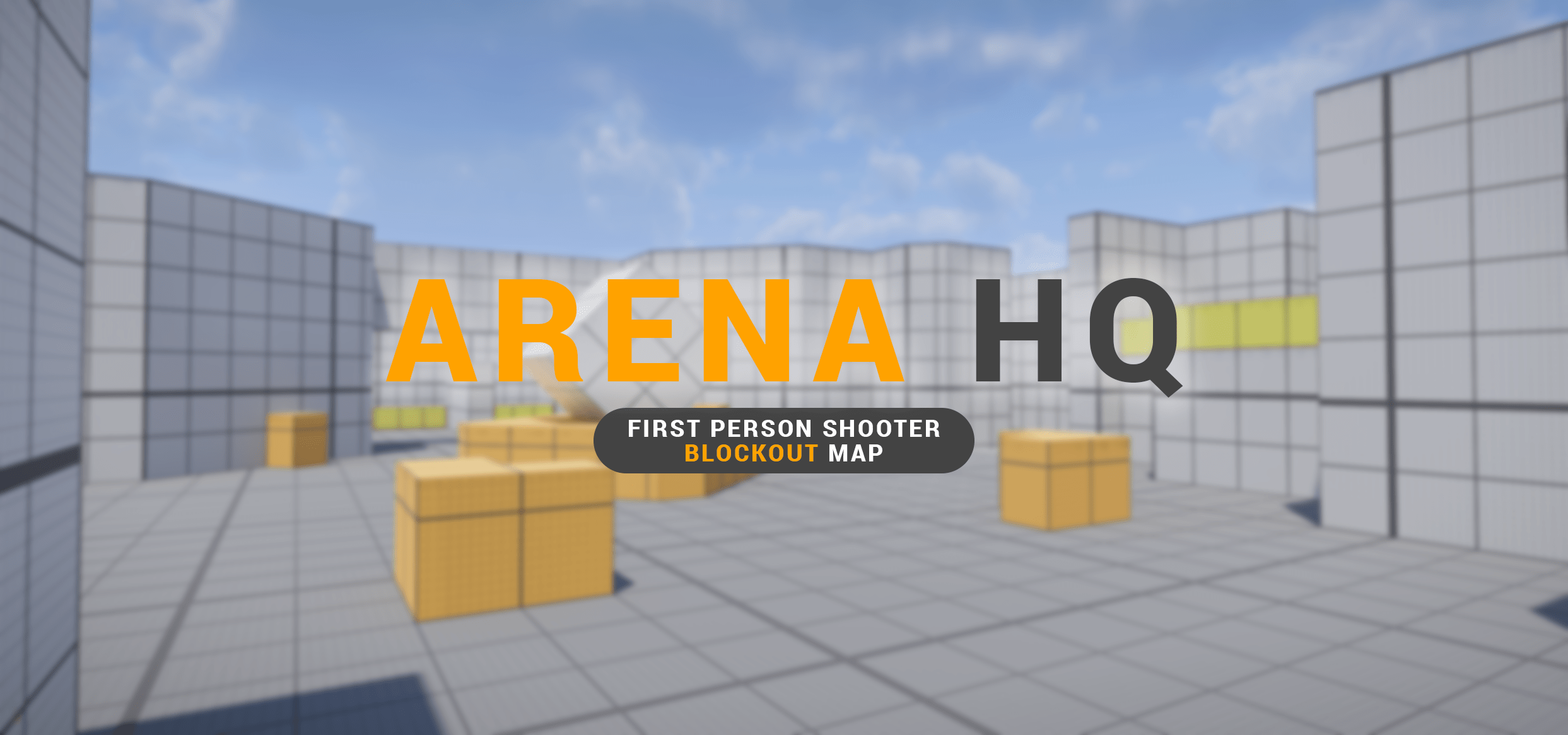
Level Design – Arena HQ
Example of an arena map for a fast-paced shooter. The arena features a central zone represented by a point of visual interest. As well as two point capture zones (A and B).
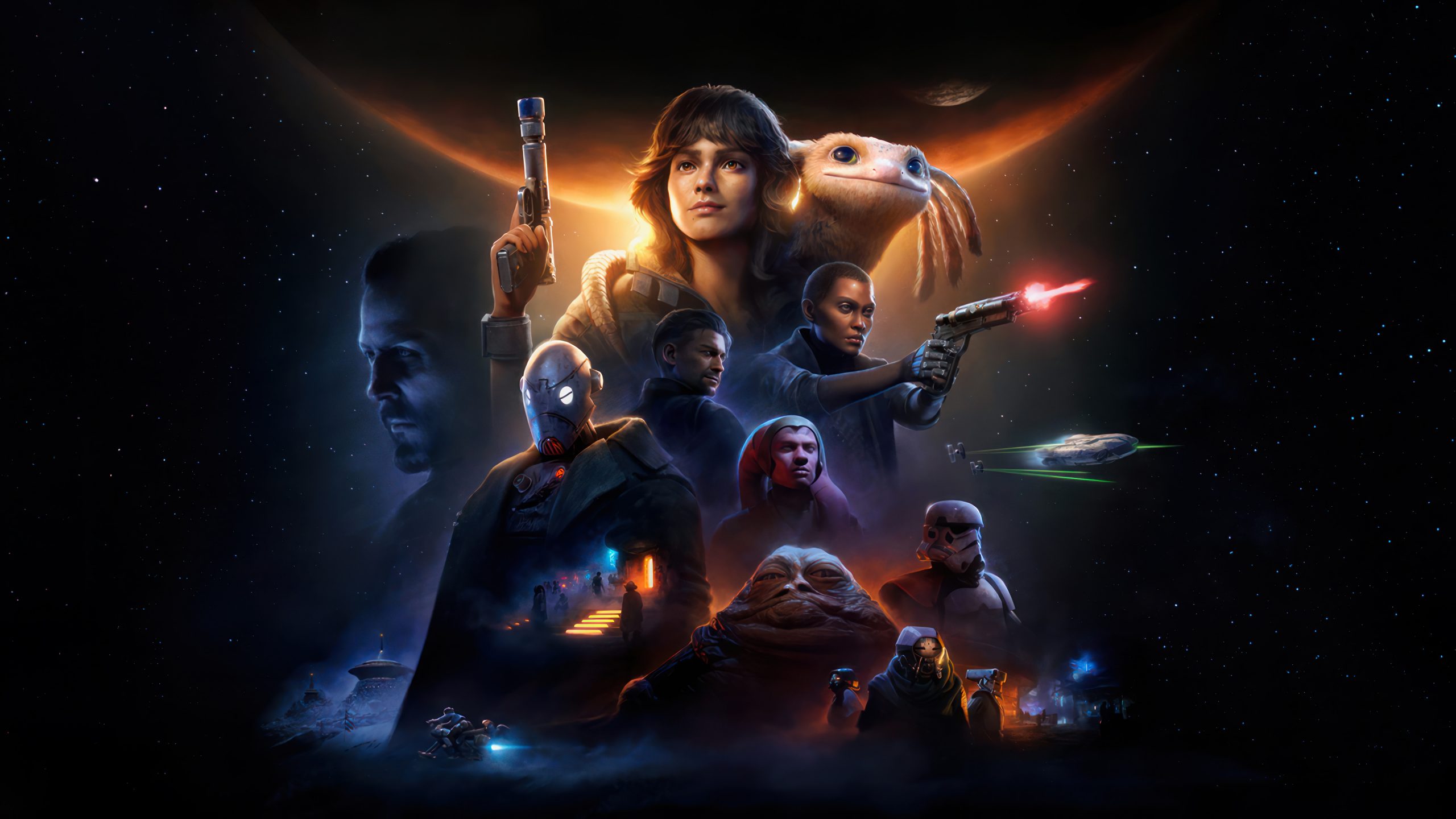
Star Wars Outlaws™
My work on the game, Star Wars Outlaws : 2 Main Quests (1 on the DLC and 1 on the main game).
Star Wars Outlaws is an action-adventure game played from a third-person perspective, with the player traversing an open world environment and engaging in various activities.
